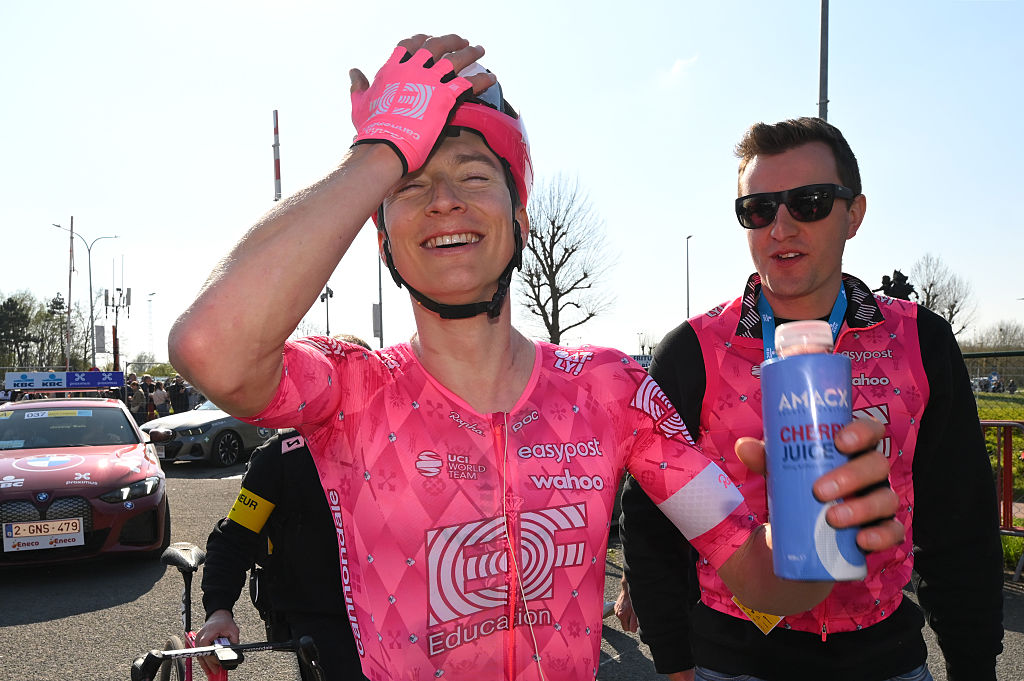In the car with Shimano Neutral Service
A passenger-seat view from the Tour Down Under
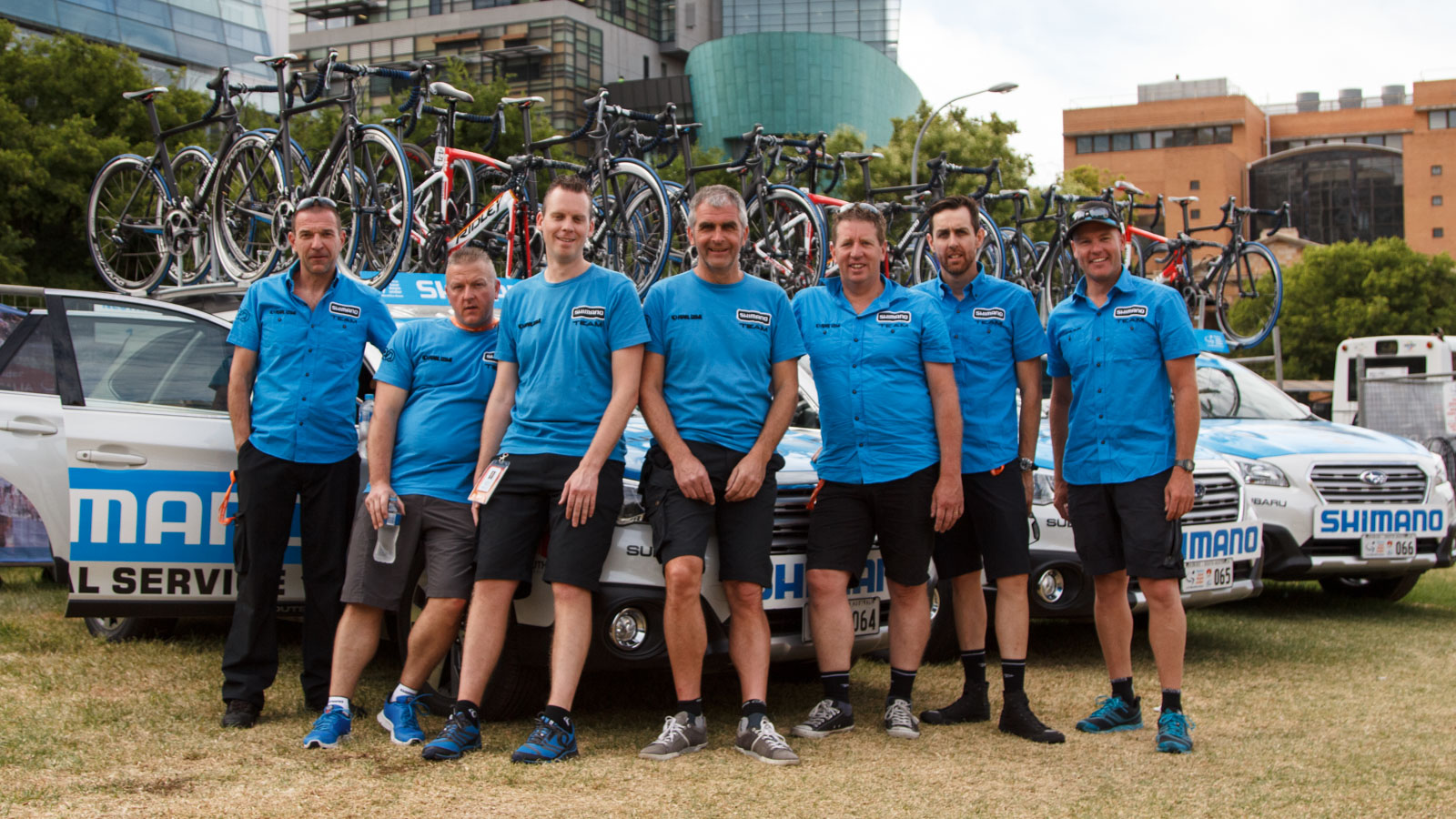
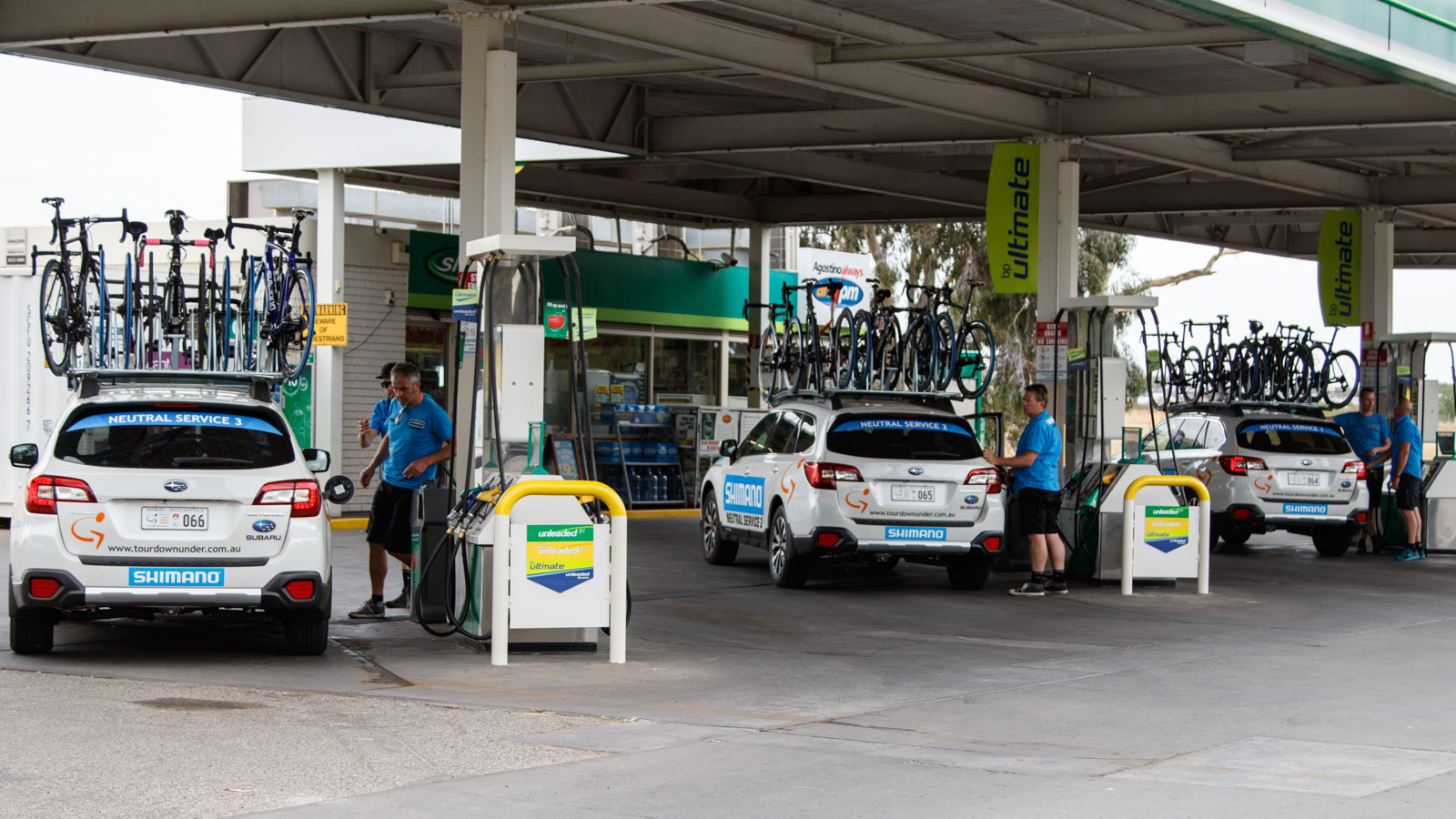
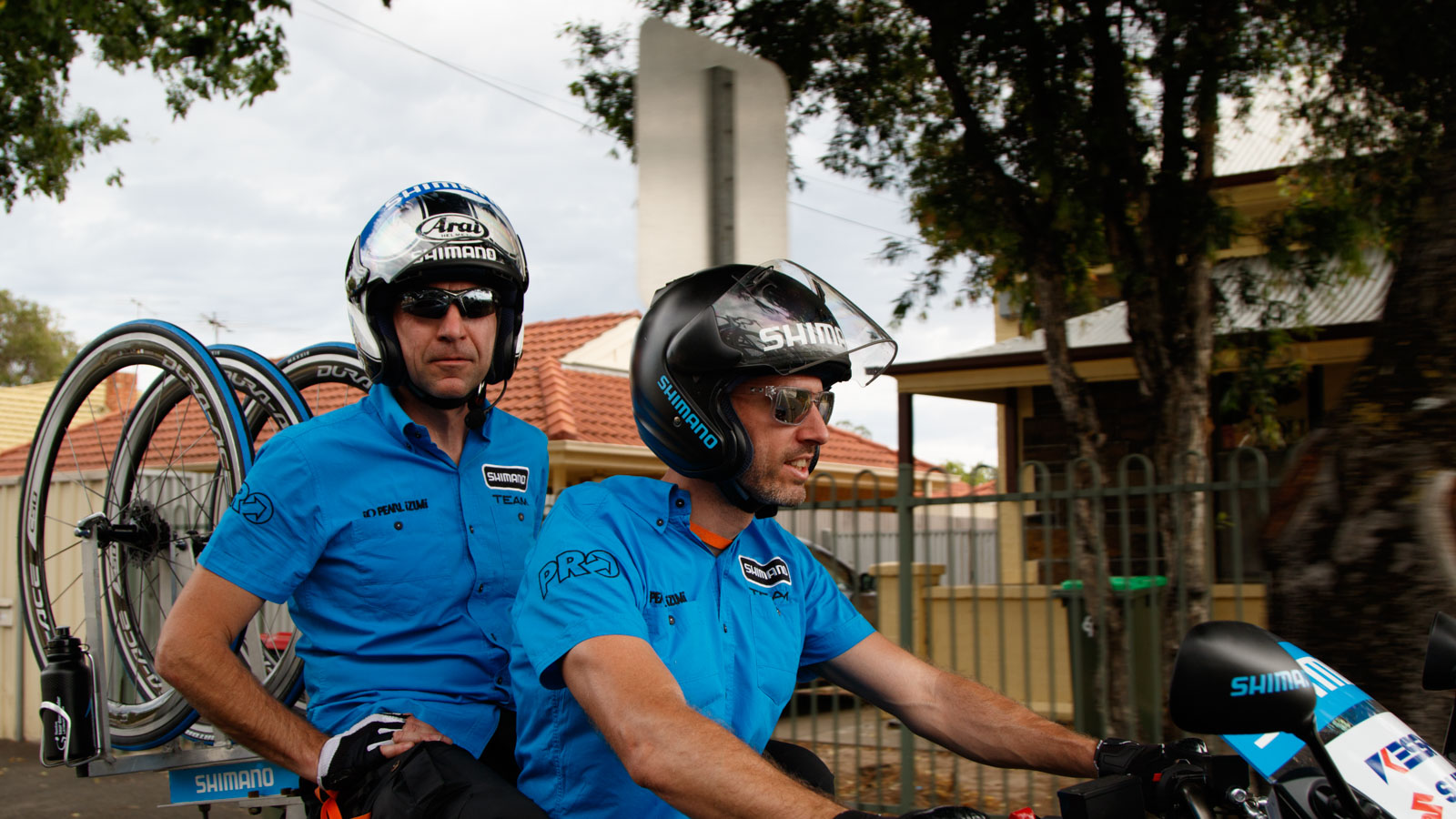
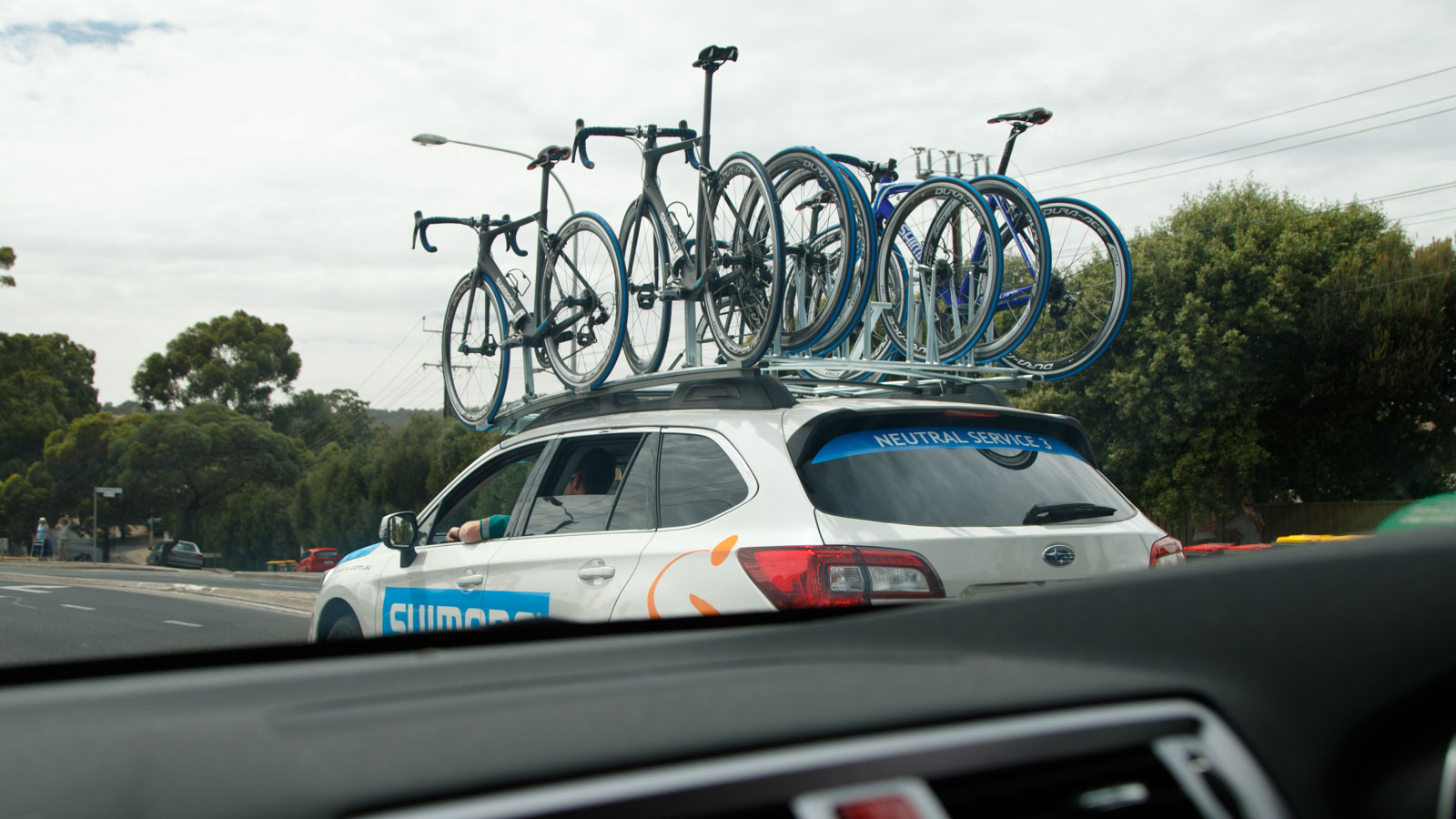
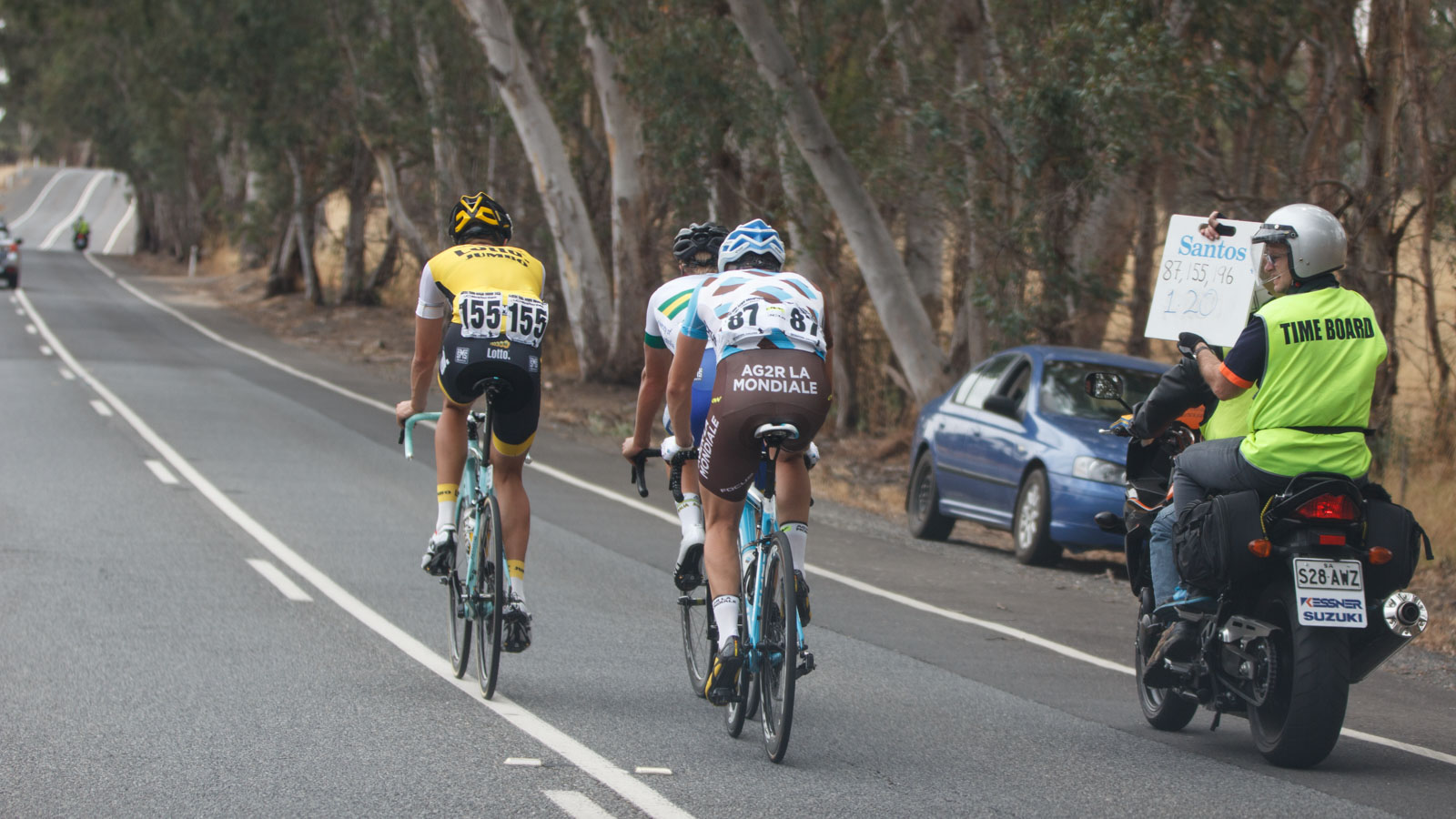
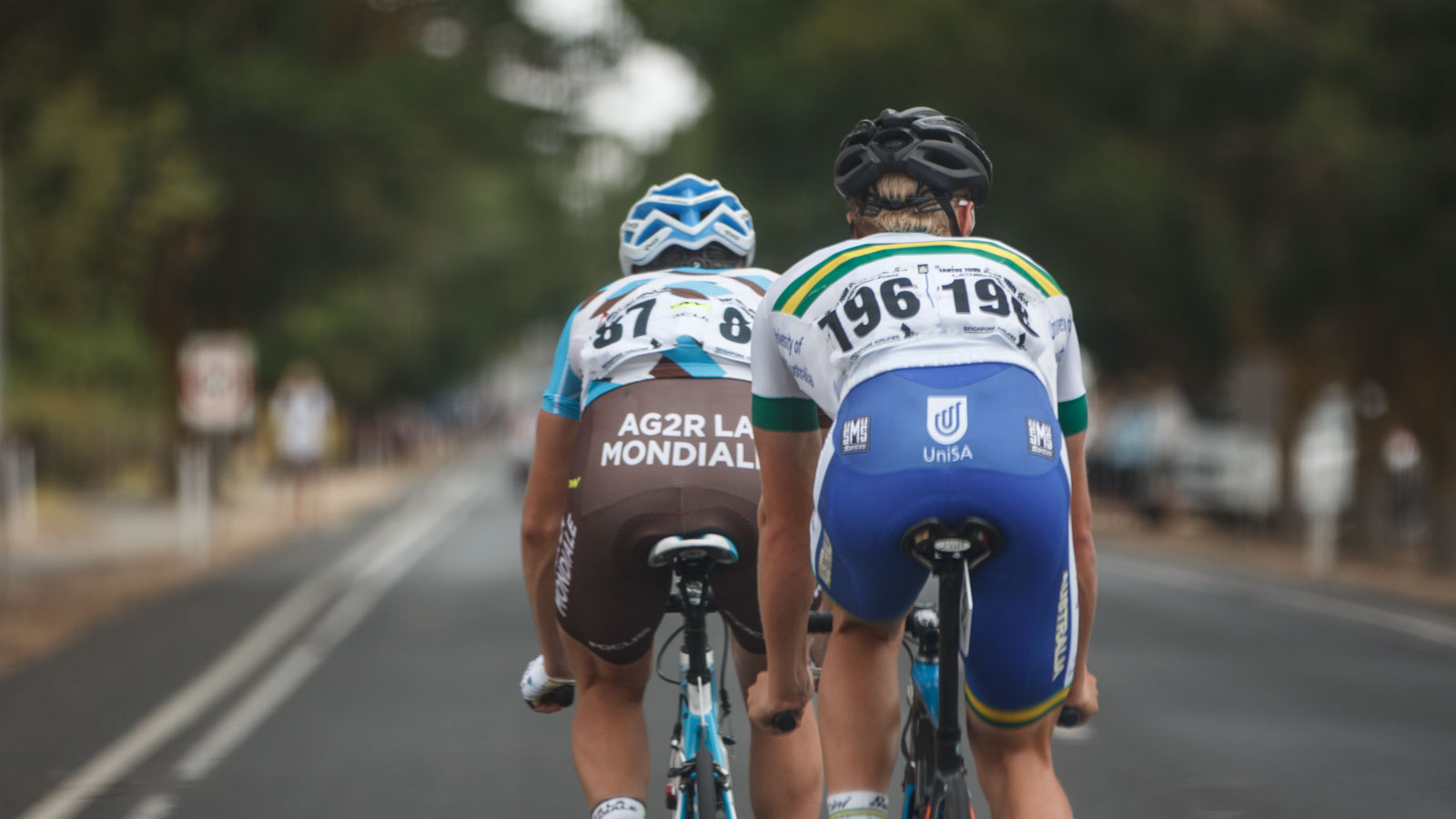
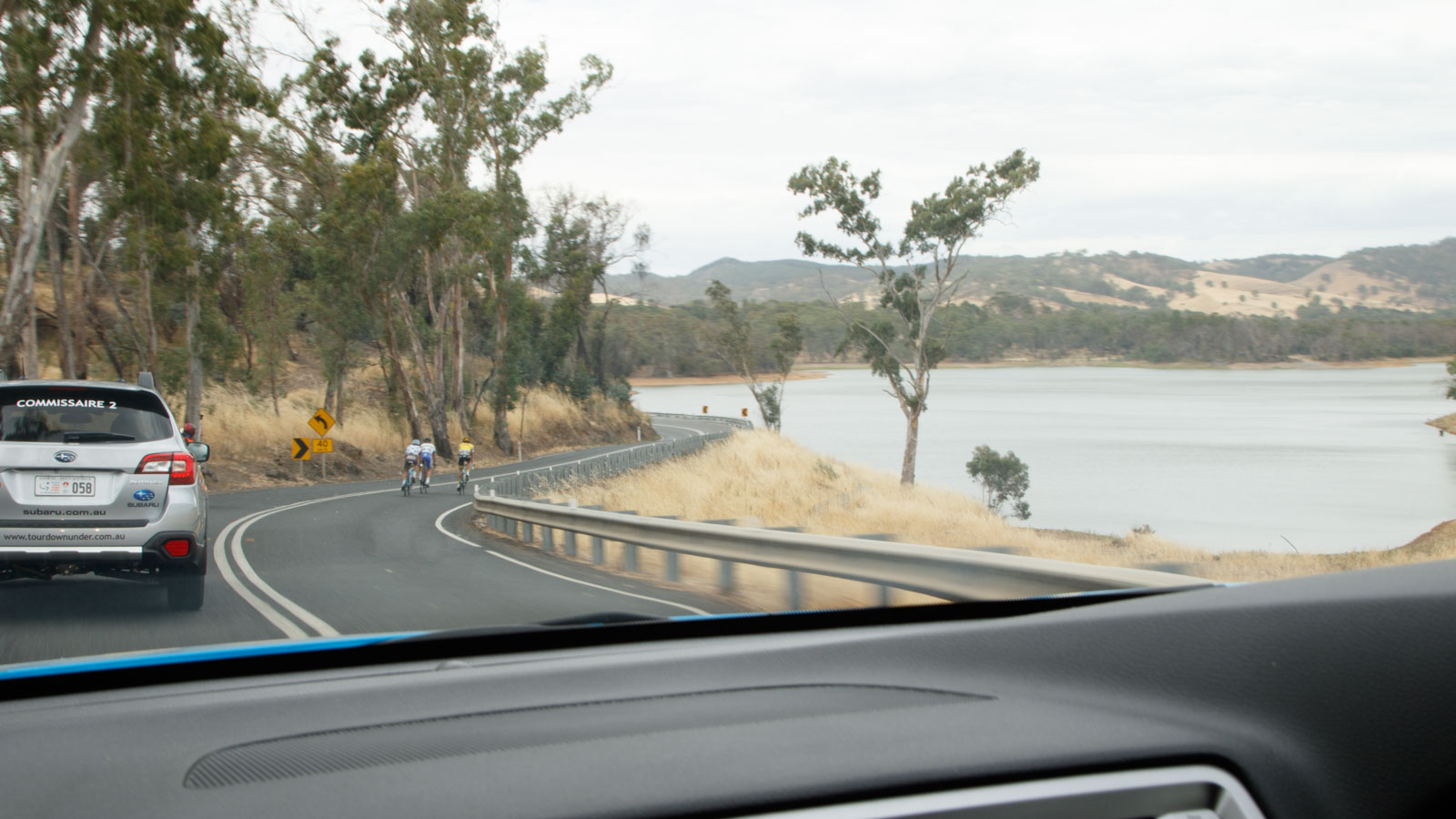
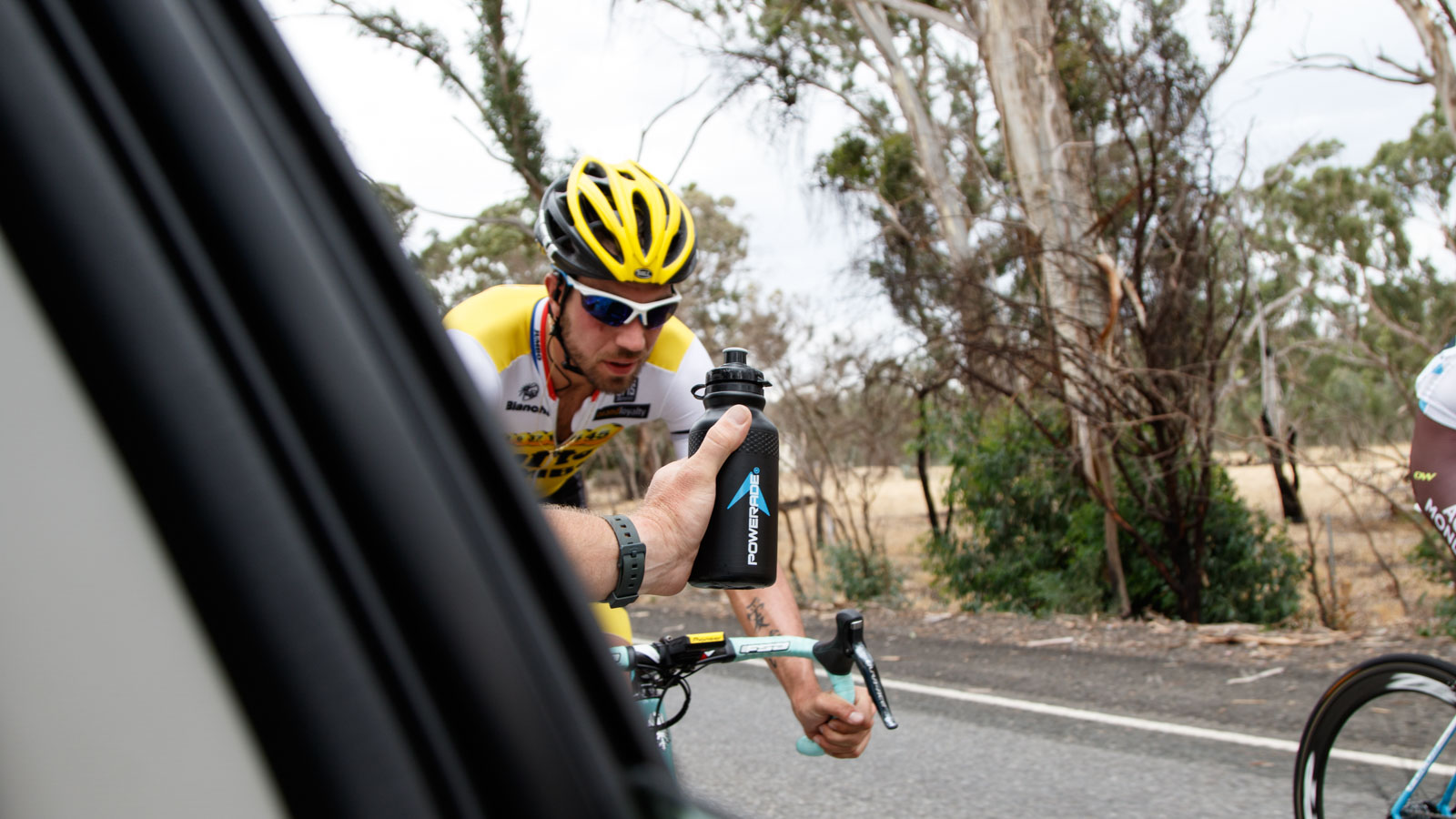
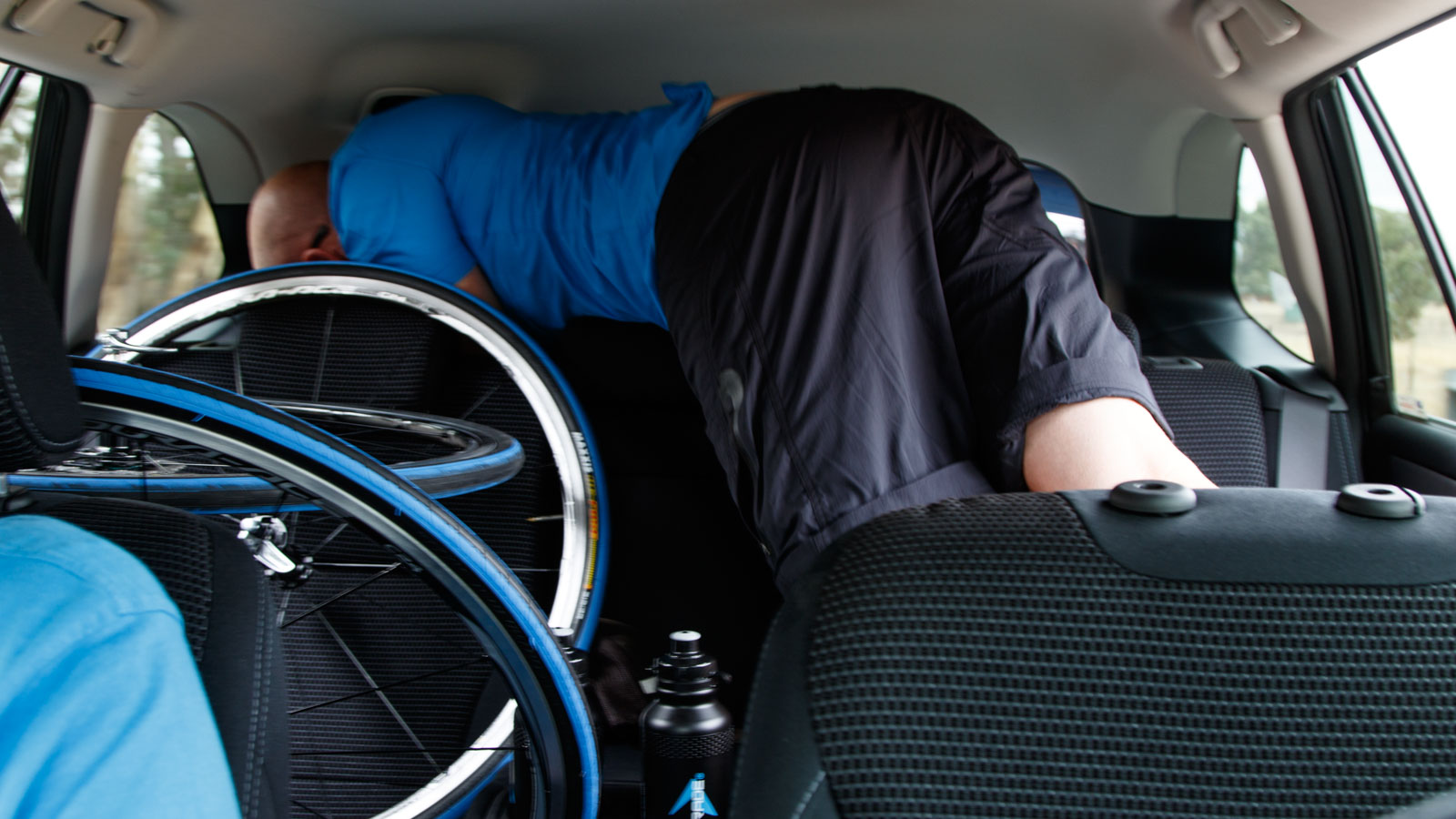
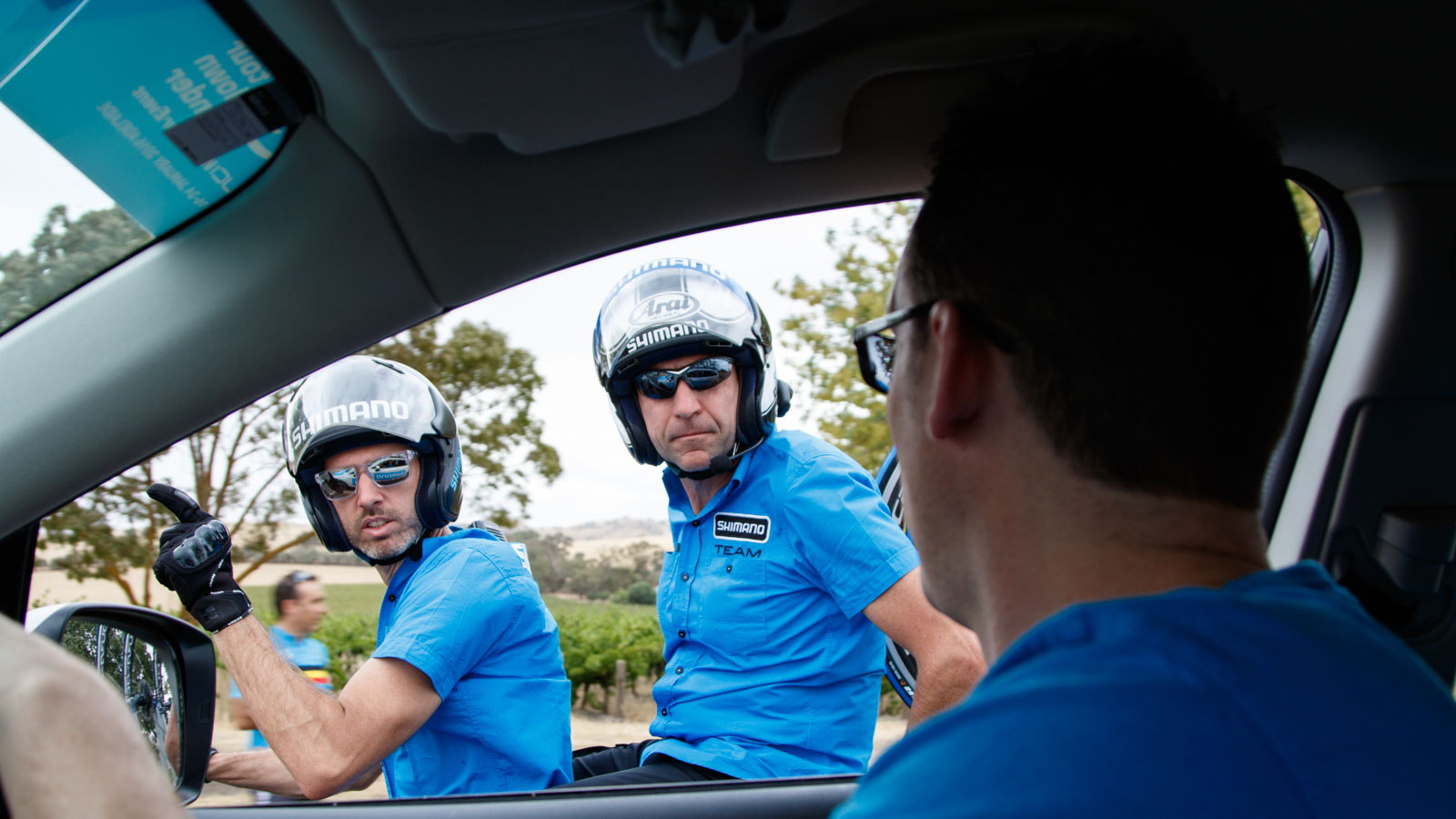
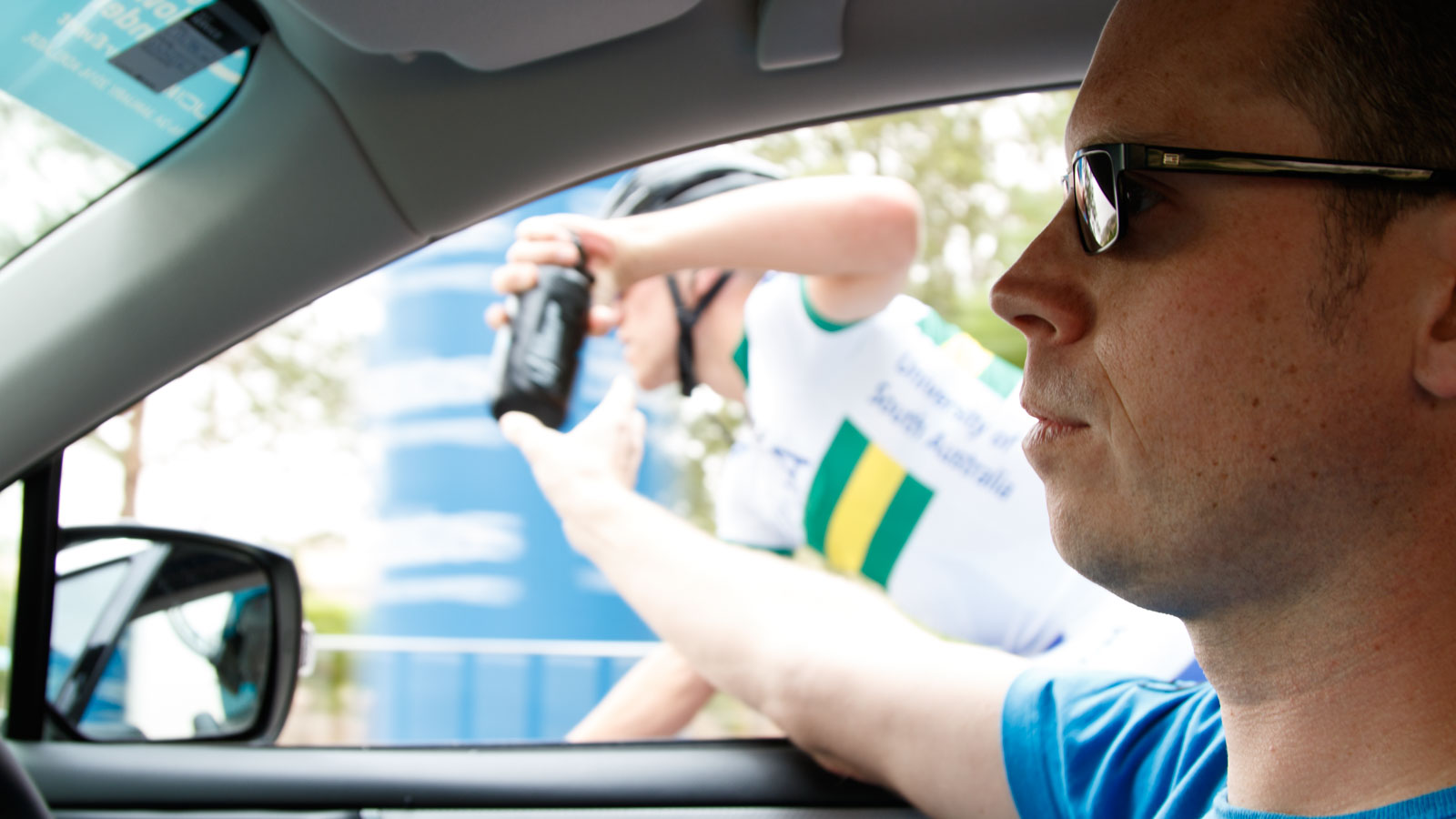
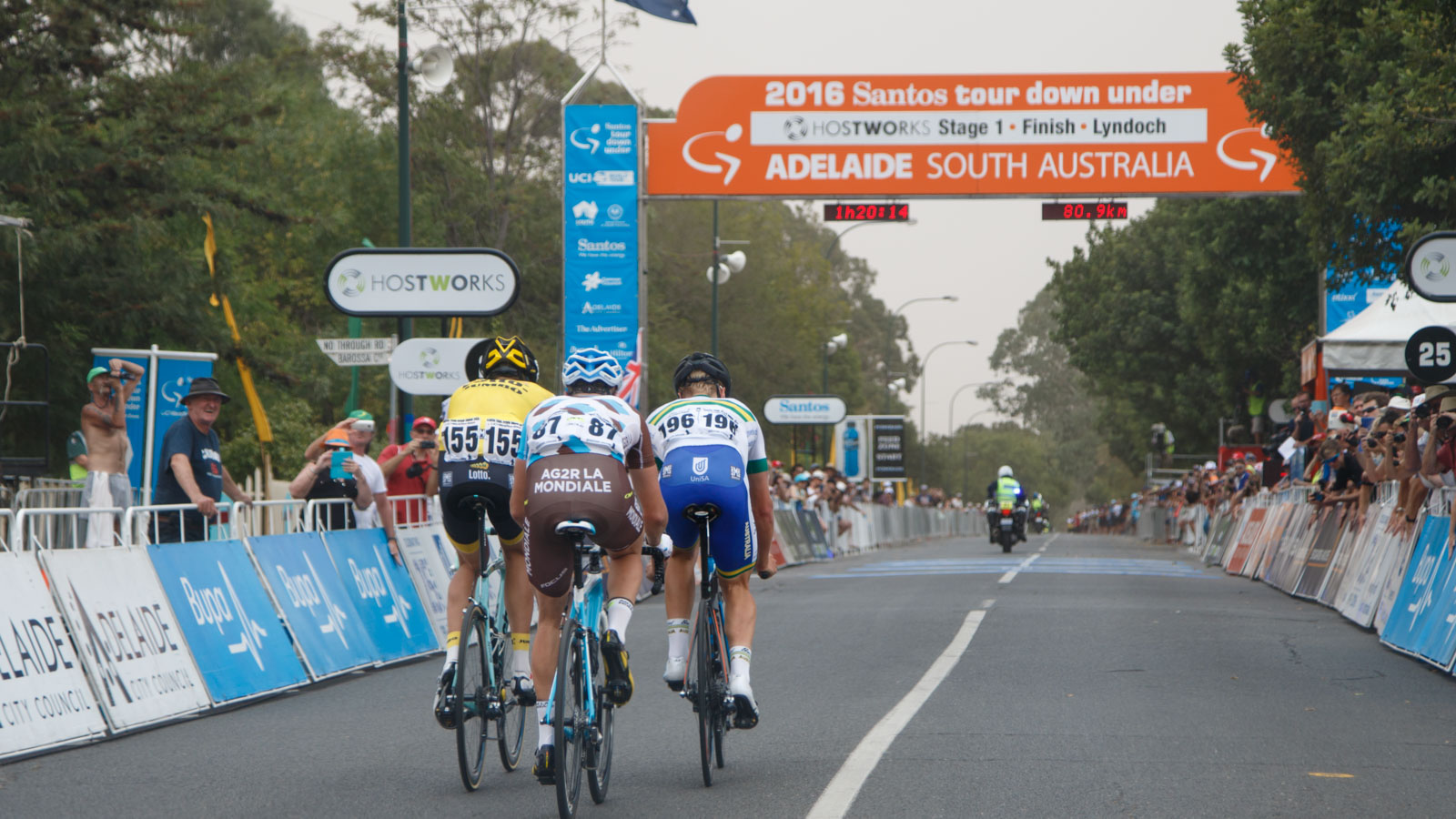
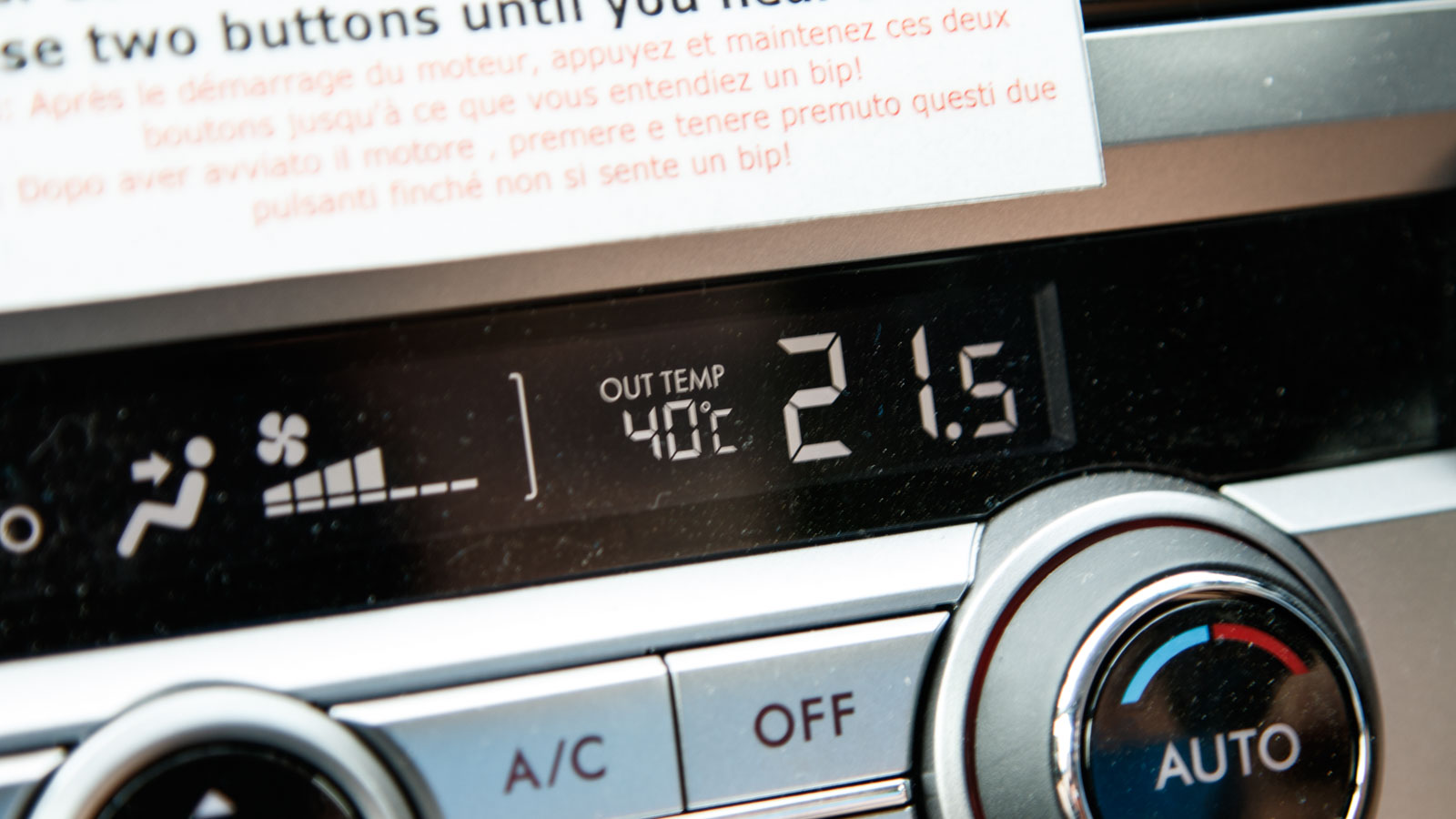
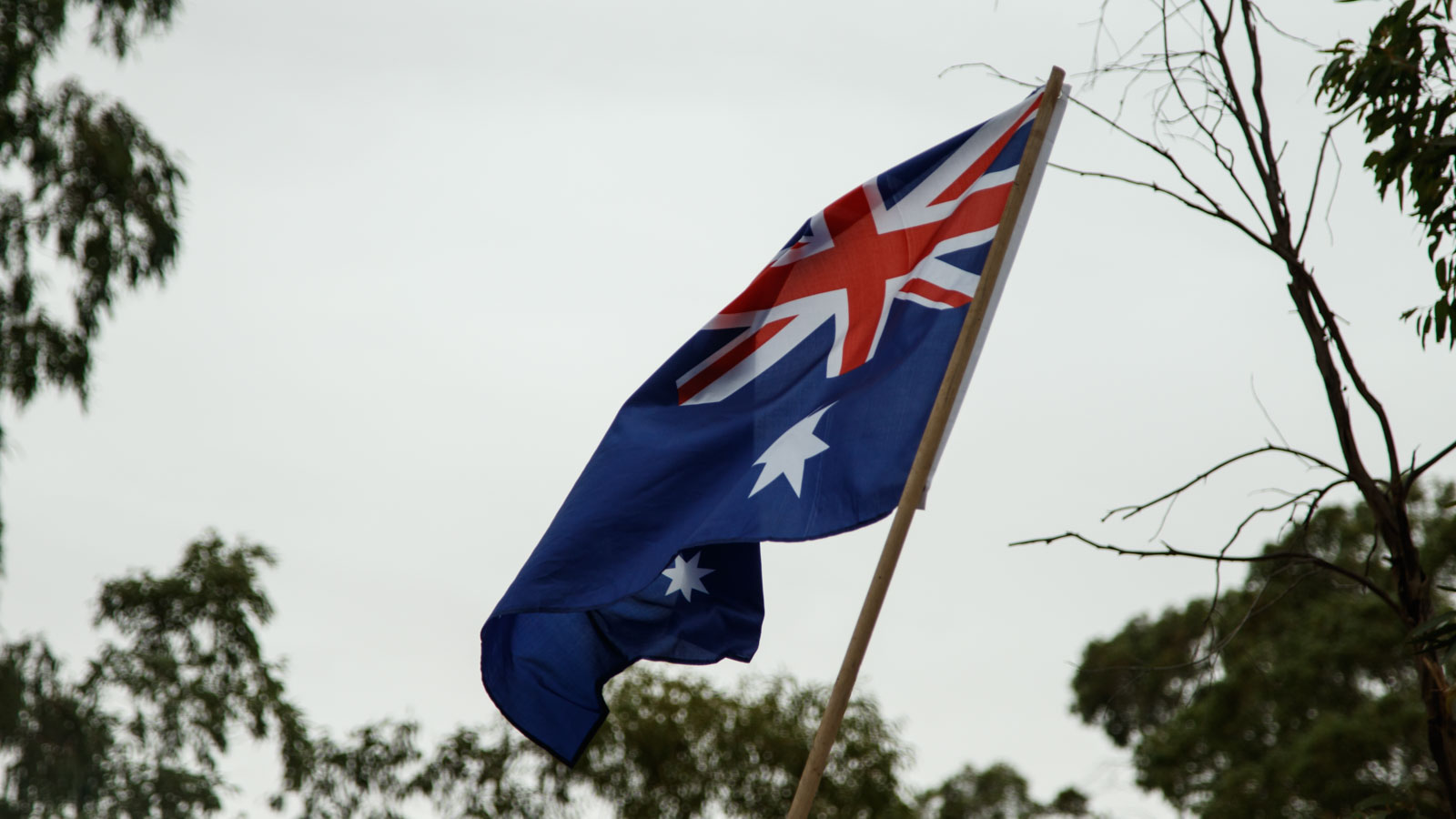
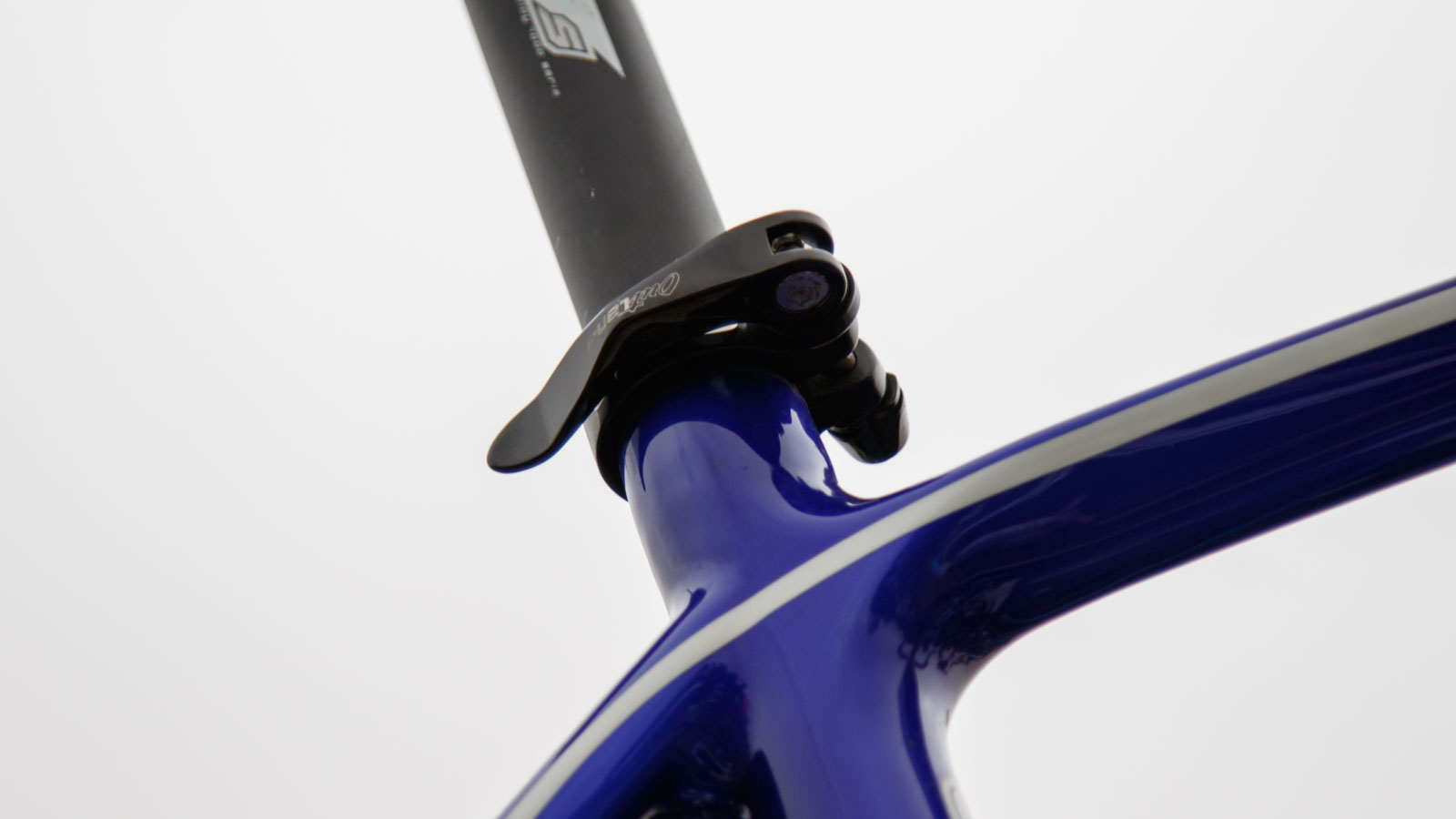
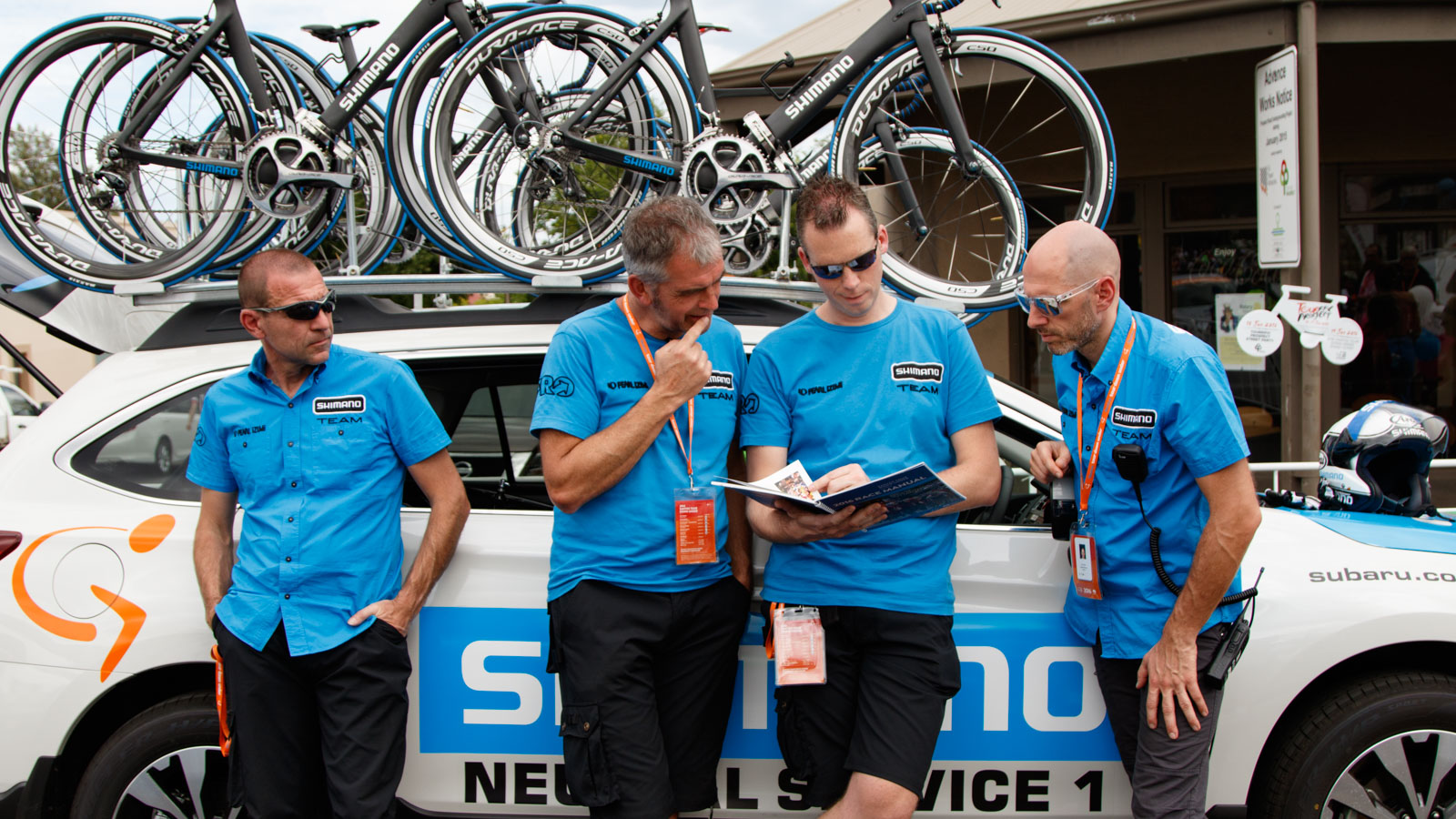
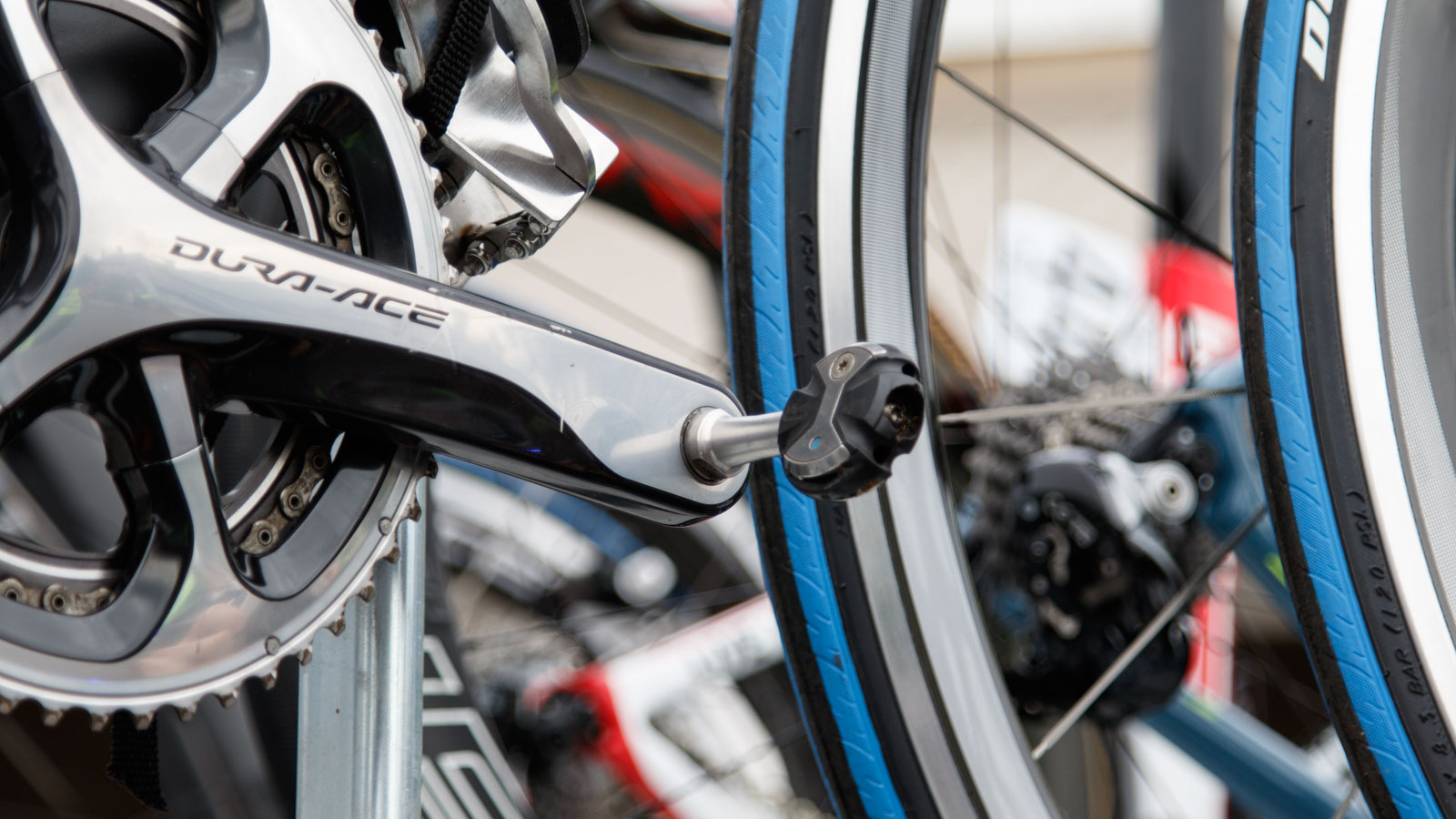
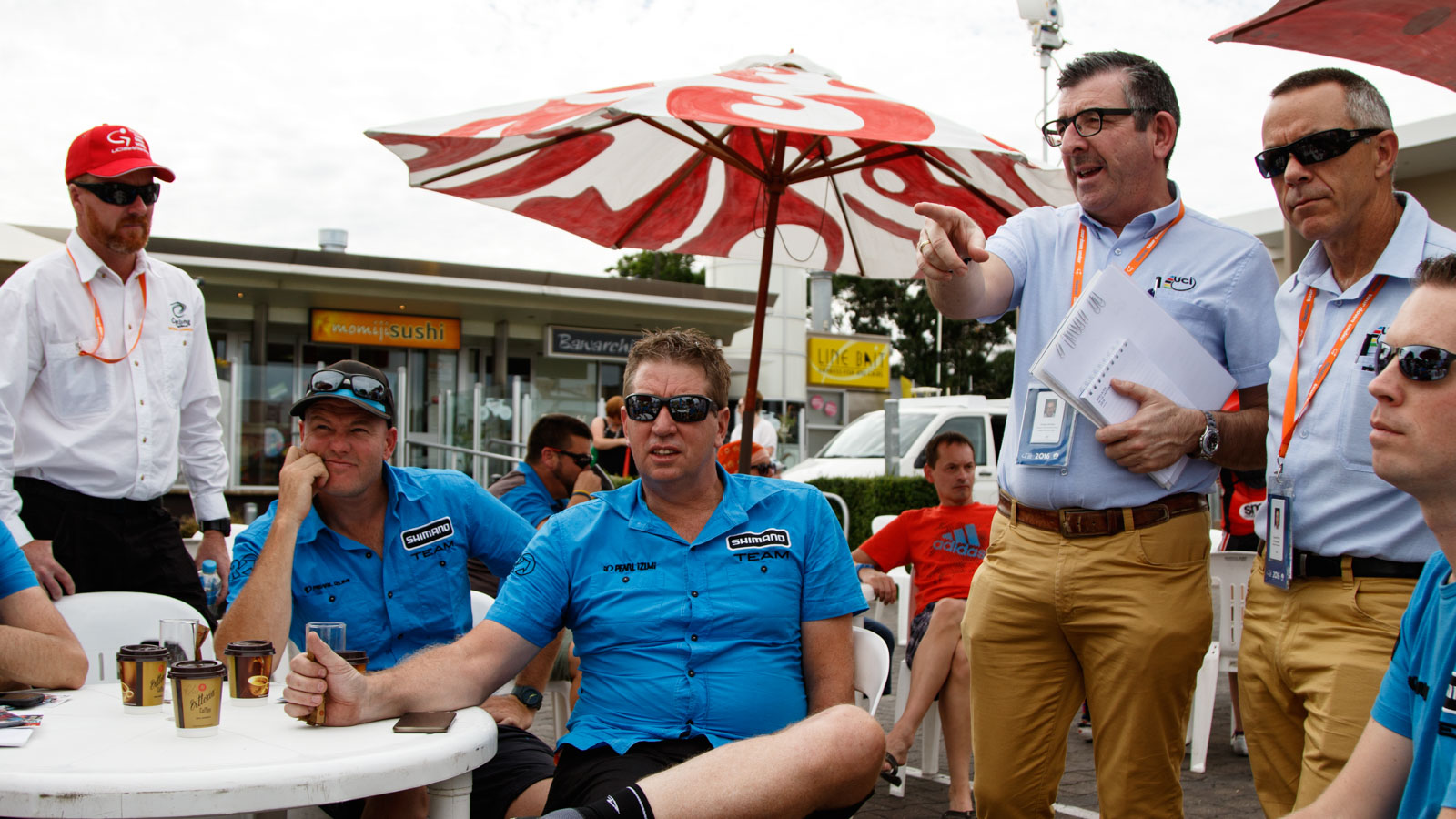
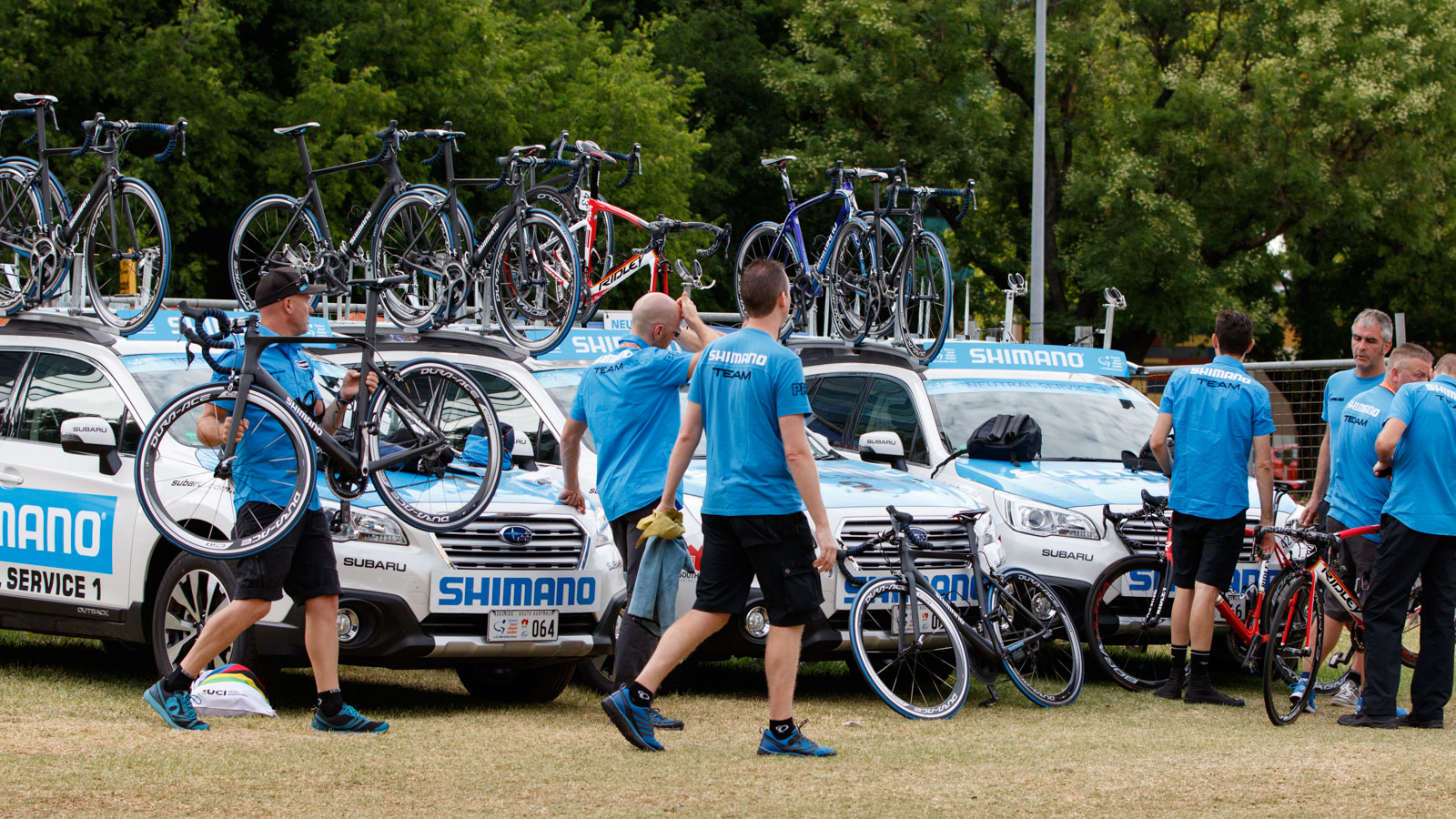

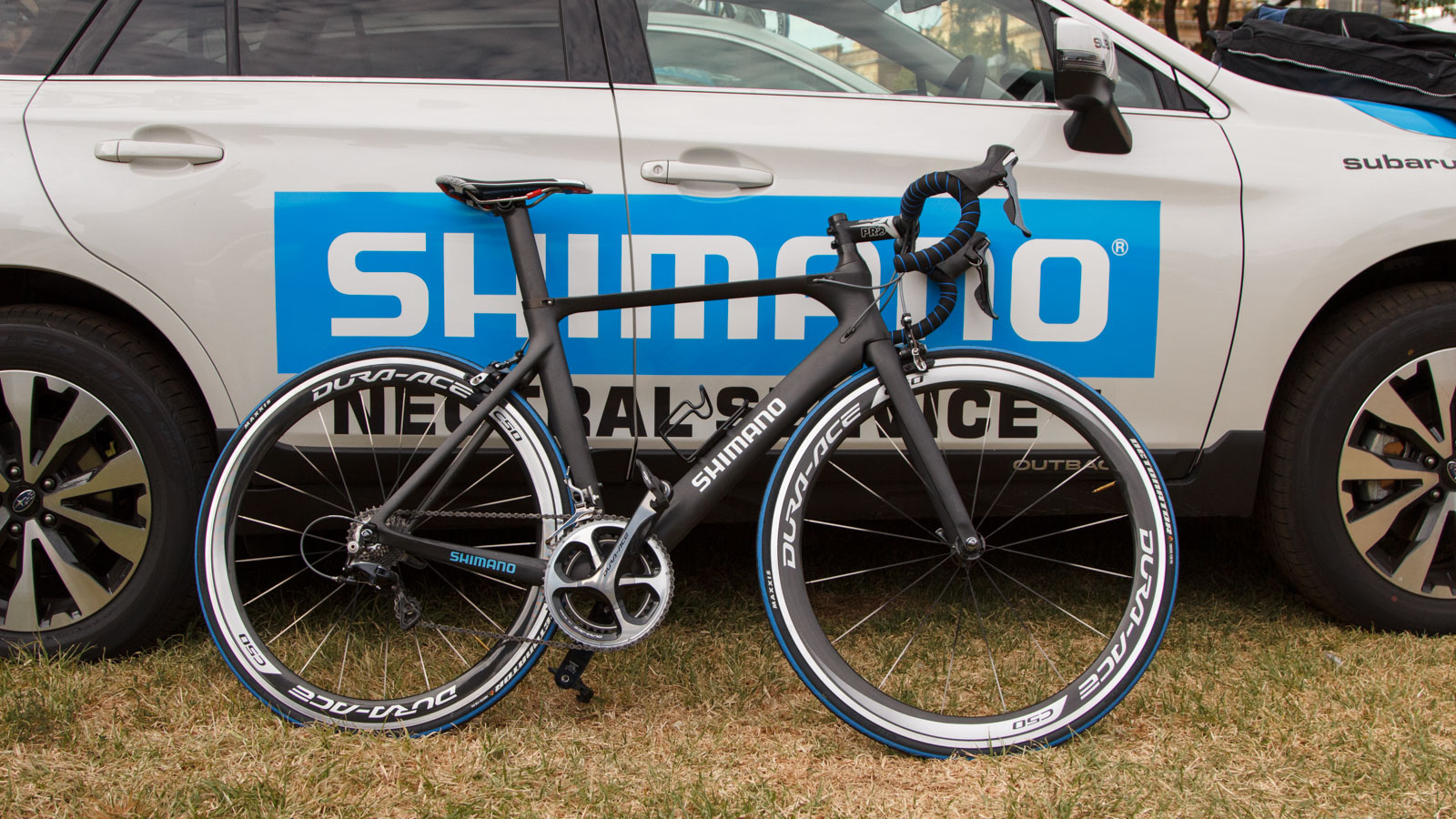
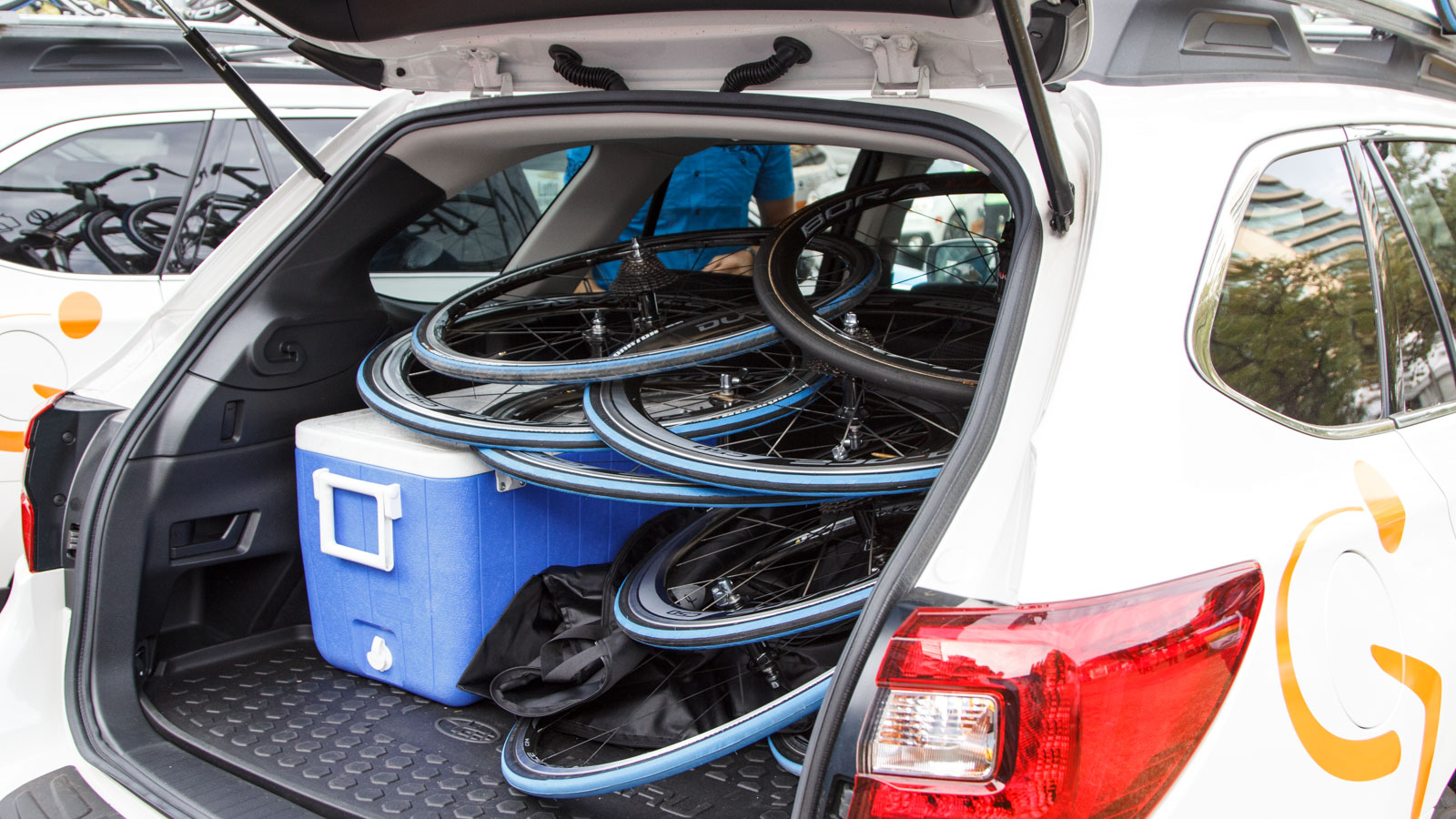
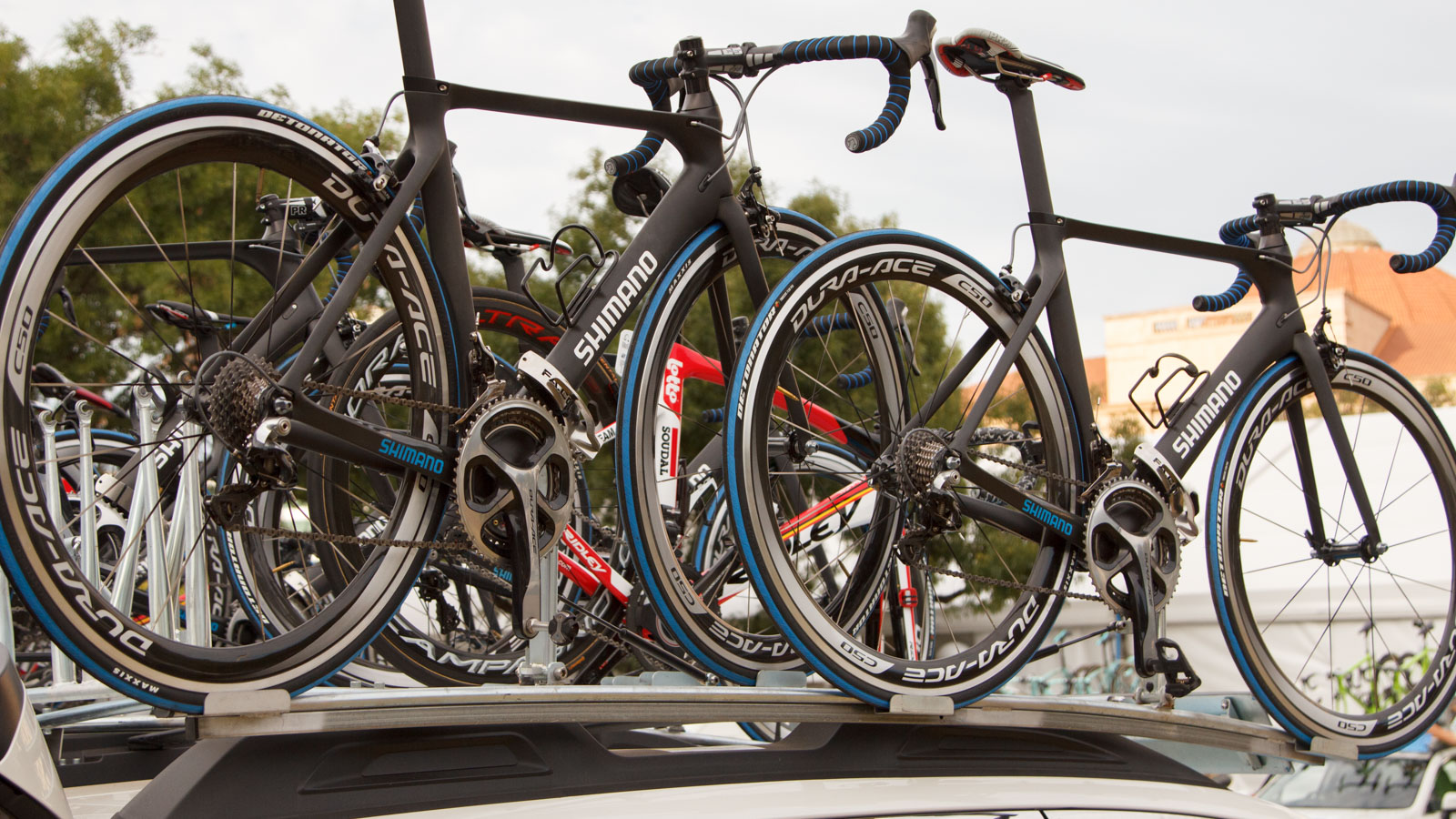
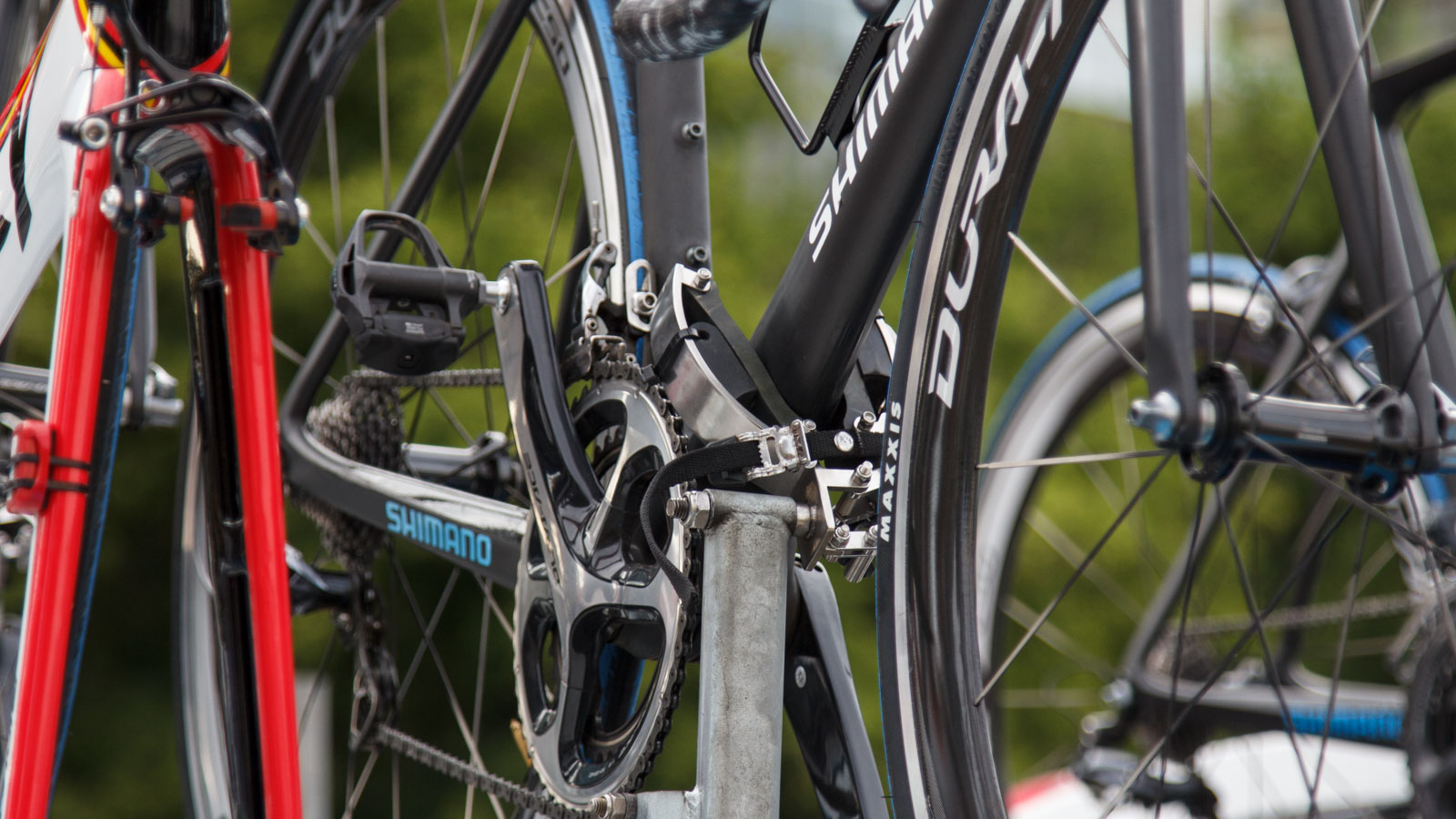
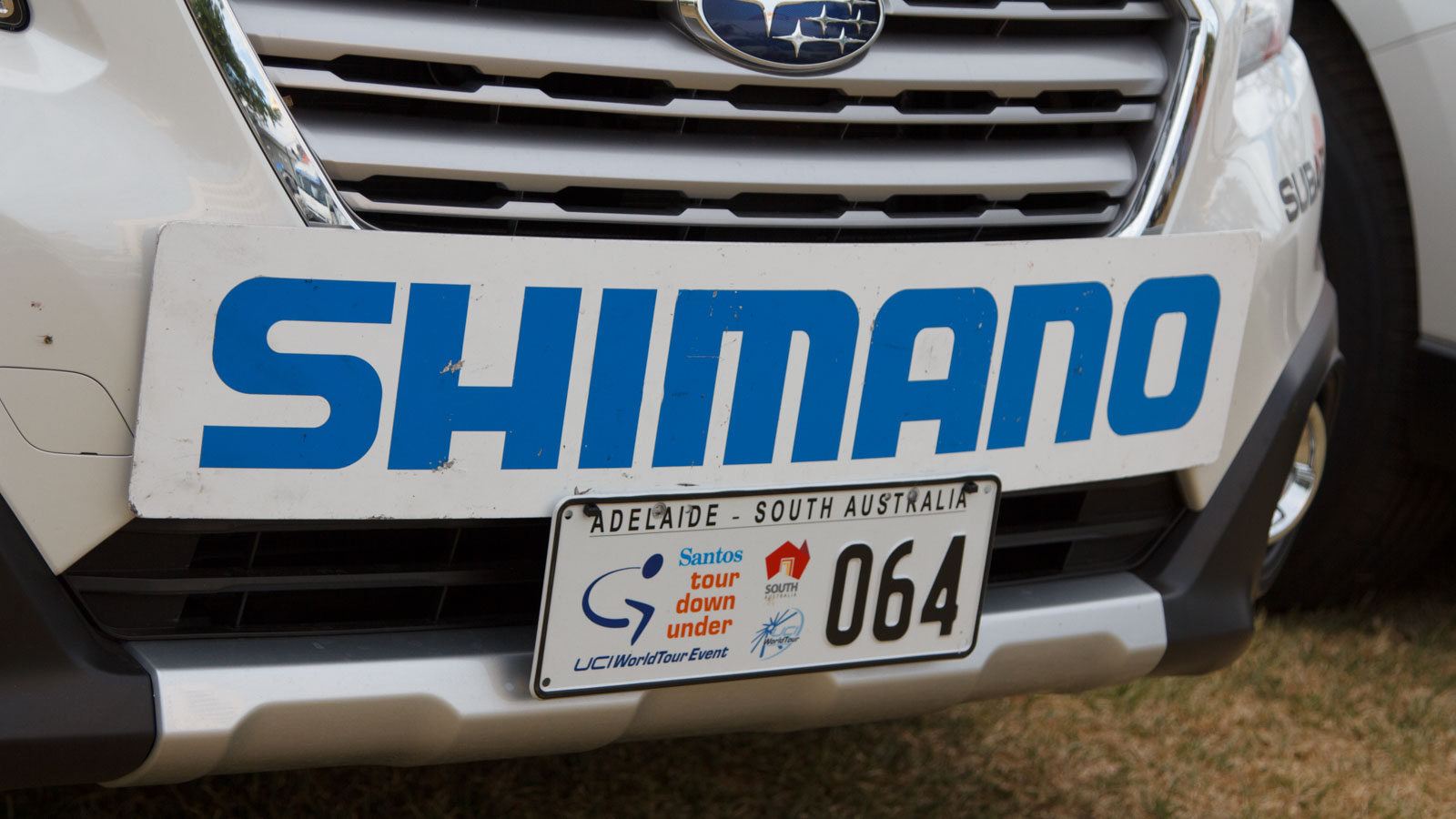
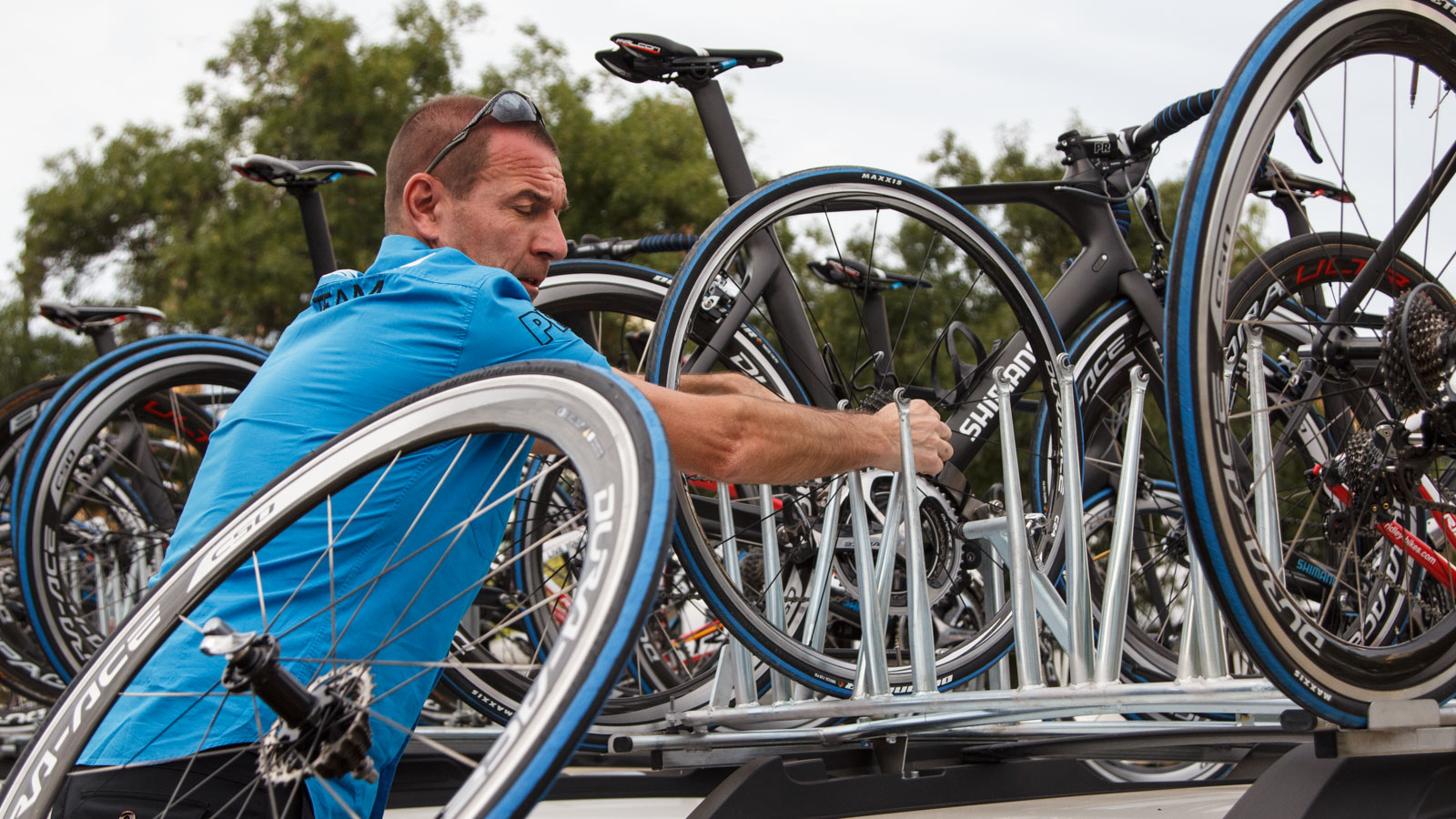
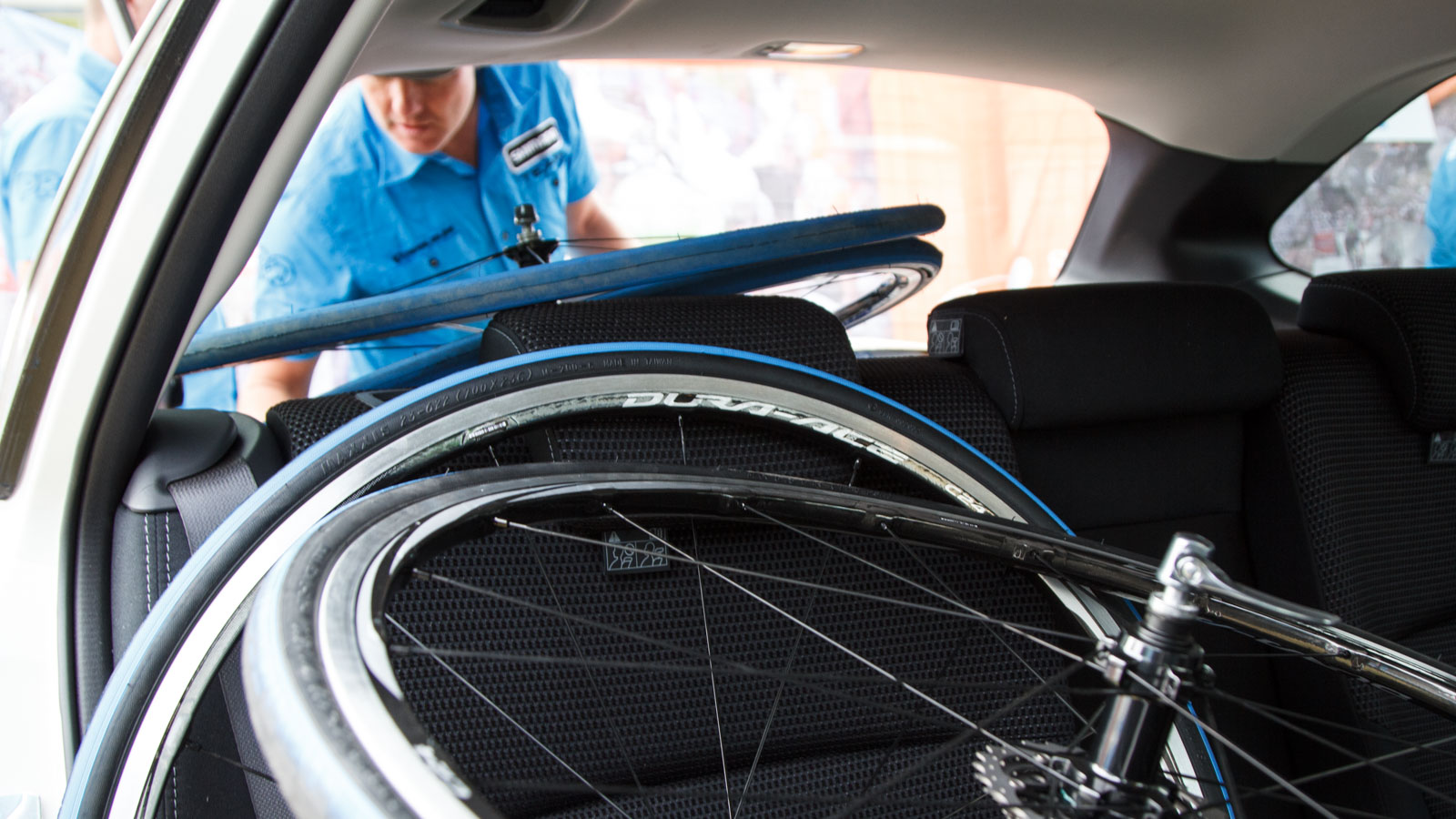
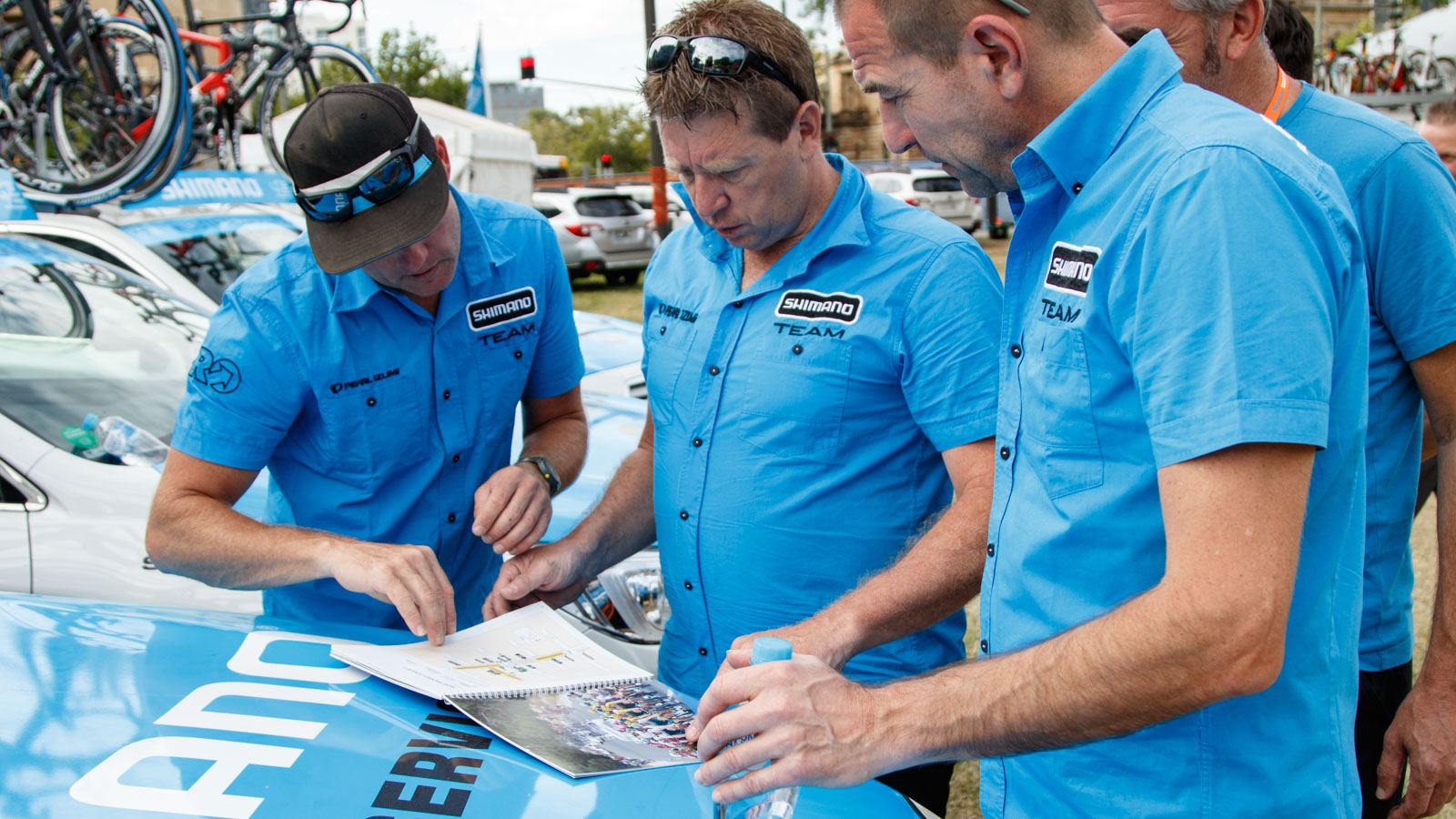
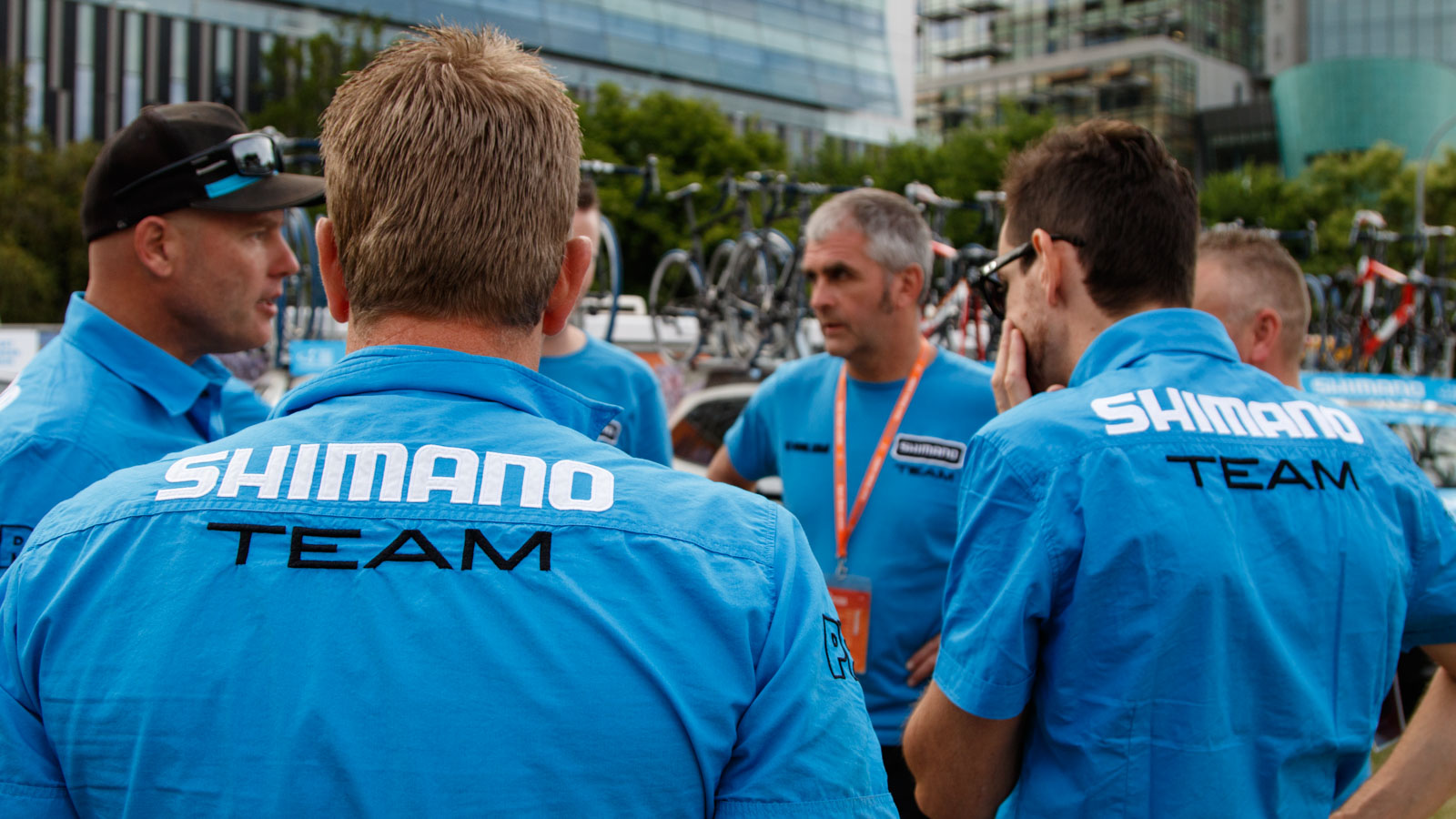
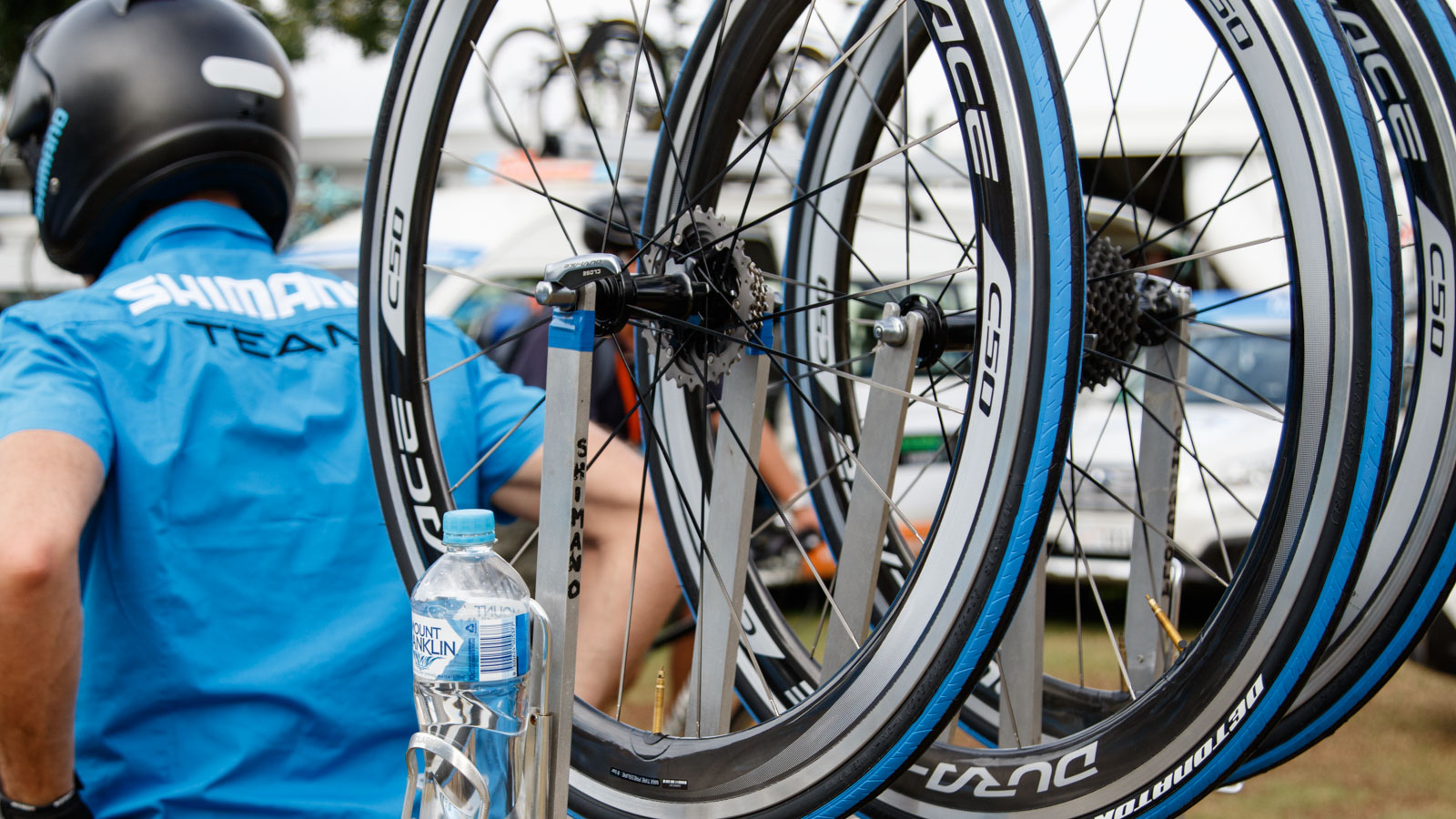
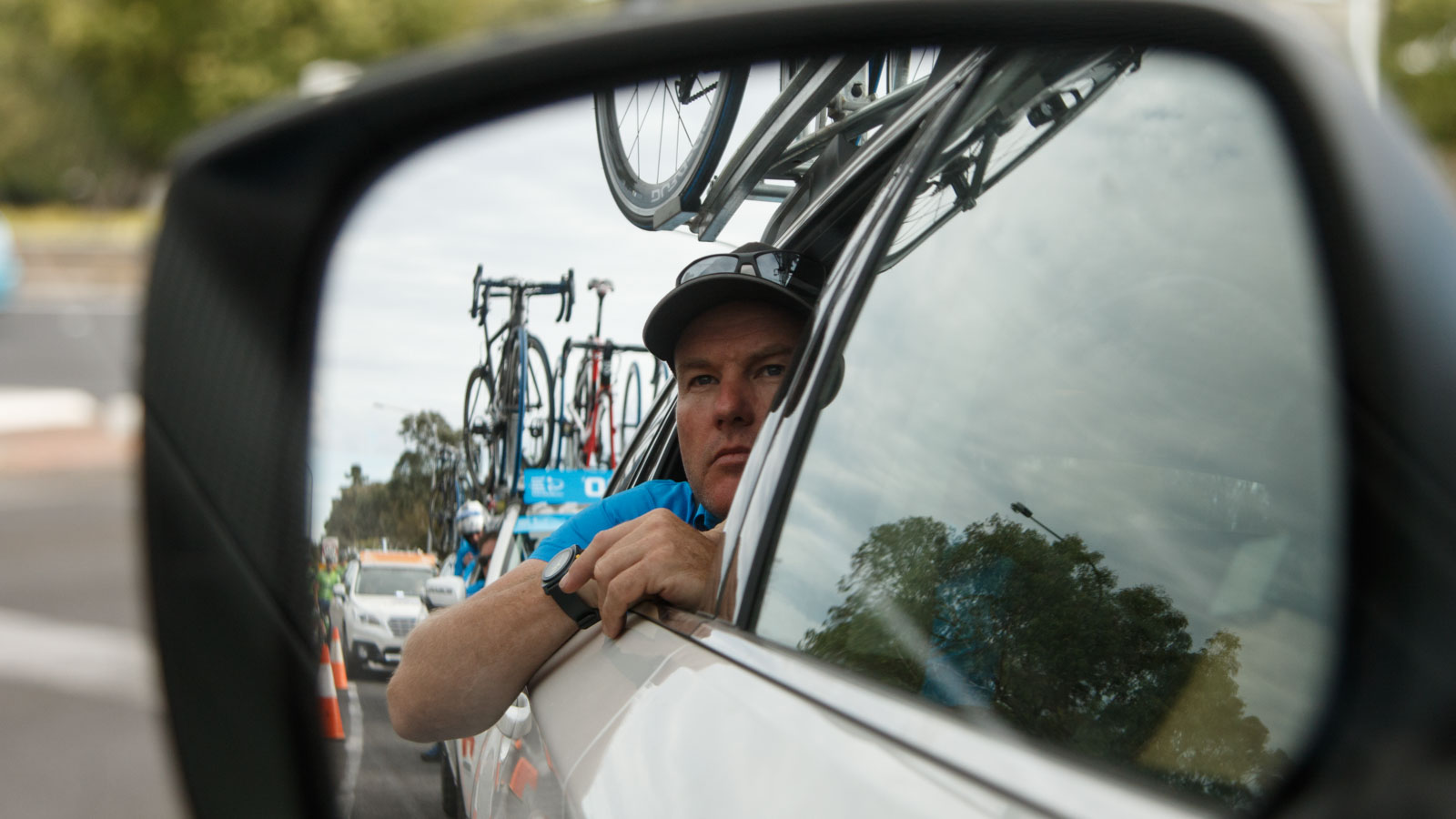
When it comes to professional road racing, riders rely on their team cars to supply them with race tactics, hydration and mechanical support. However, sometimes things don't go to plan, or perhaps there's a split in the peloton and riders can be left stranded. Saving the day, Neutral Service is there to step in and provide support to any rider who needs it.
Shimano looks after the Neutral Service for most WorldTour-level UCI events, with the exception of those run by ASO (the small matter of the Tour de France, for instance) and RCS Sport (Giro d'Italia). With this, a team of drivers, motorbike riders and mechanics are there – dressed in blue – to follow the race.
While on duty at the Tour Down Under, I managed to hitch a ride in one of the three Shimano Neutral Service cars for the first stage. It was a sweltering hot day with high winds, during which a small breakaway of Sean Lake (UniSA-Australia), Alexis Gougeard (AG2R-La Mondiale) and Martijn Keizer (LottoNL-Jumbo) was left dangling out the front without the support of their team cars, which were behind the peloton. (In the end, the peloton came together in the final kilometres with Caleb Ewan winning the sprint.)
For the Tour Down Under, the Neutral Service team is made up of eight staff, four mechanics and four drivers, two of whom are on a motorbike while the other six get to enjoy the comfort of air-conditioned cars.
During the Australian race, each team has just one car in the convoy. So if there's a break or split, then there's a good chance Neutral Service will need to provide assistance. The race commissaires will call upon the Neutral Service motorbike if a breakaway gets a gap of 15 seconds. One of the three cars will be called upon if that gap opens to 30 seconds or beyond (as was the case during my time with them during Stage One). Another Neutral Service car waits up front in case a secondary split forms, while the final vehicle is placed behind the peloton.
The personalities
The majority of the Neutral Service drivers and motorbike riders are friends from Belgium (the remainder being Aussies), and all have deep roots in cycling. They also all have full-time work away from cycling, but are drawn to the Neutral Service work out of passion for the sport.
The latest race content, interviews, features, reviews and expert buying guides, direct to your inbox!
For these guys, being part of the race operation in Australia is a chance to get away from work and do something they love with their time off.
Here for the race from Belgium, Tom Claes (driving) and Patrick Dils were on the motorbike
Steering the Neutral Service motorbike was Tom Claes from just outside of Brussels, Belgium. He told us that racing is in his blood, with his father (George Claes) a winner of Paris-Roubaix in 46 and 47, and his father a former pro too. Although he joked that he failed at keeping the legacy going, he still gets paid to ride two wheels as a motorbike police officer back home.
Our driver for the day was Koen Vermeire, who works in the automotive electronic components industry. He's experienced behind the Neutral Service wheel, and grew up racing bikes himself.
It's a common story among the Neutral Service staff, where the mechanics have a wealth of experience in the role. Marty Millwood, who was in the car with me for the day, also grew up racing bikes, with a deep heritage in Australian cycling.
Millwood waiting for the racing to begin
Millwood spent the day rustling in the boot grabbing sealed water bottles and emptying them into bidons to keep the breakaway riders hydrated. It's not always just water handed out; for example, Keizer (LottoNL-Jumbo) seemed to be under the weather that day and asked for something other than water. His requests were met with a chilled electrolyte drink.
At one point, the riders had burned through the supply of bidons and a quick bit of communication with Claes on the motorbike saw them scoot up the road to grab from the second neutral service car. Within a couple of minutes, the motorbike was back, with bottles being handed out like a domestique rider would to their team.
The gear
The bikes are stopgap – if riders can, they'll get back on their own equipment as soon as possible
While this varies from country to country, the Shimano Neutral Service setup at Tour Down Under offers Avanti Corsa carbon bikes with Shimano 11-speed Dura-Ace components. Despite the fact that riders use tubulars, the neutral service wheels are always clincher-type, with a variety of C50 and C24 wheels seen.
These wheels are shod with puncture-resistant Maxxis Detonator tyres. They're not exactly race rubber, but something that should ensure the rider can continue on without issue.
Although it's run by Shimano, Neutral Service means catering for all pedal types used
The Avanti bikes on the roof feature a mix of the three pedal systems used in the peloton – Shimano, Speedplay and Look. The mechanics have a detailed list of which team is on what, and know which bike to grab in an emergency. Some of the bikes feature quick release seat clamps, while the more aero models would need a quick adjustment with a hex key.
In reality, there's no rider in the peloton that wants to be given a Neutral Service bike. It's a last resort. It's not because these bikes are bad, but rather the riders are so accustomed to their individual setups that a Neutral Service bike is never going to be a bike that they'll be truly comfortable riding, let alone jump on and win a stage with.
The riders are however far happier to take a spare wheel from the Neutral Service mechanics. Such a task is made easier by the fact that all WorldTour teams are on 11-speed drivetrains, allowing for easy compatibility between Campagnolo, SRAM and Shimano-specced outfits.
Of course, all the industry talk of disc brakes is sure to throw a few spanners in the works. Neutral Service did have a few disc wheels packed for the races, but in the end, left them out of the cars as not a single rider was riding on the new braking systems at the Tour Down Under. The mechanics are wary of the new system, citing that compatibility between brands and speed of wheel changes is sure to cause issues.
If you're watching the race on TV, it's unlikely you'll ever see the blue Shimano Neutral Service vehicles. The mechanics' job is a rather thankless one, but it's certainly something the staff involved love to do.
Click through the gallery above to see the action from Stage One.
